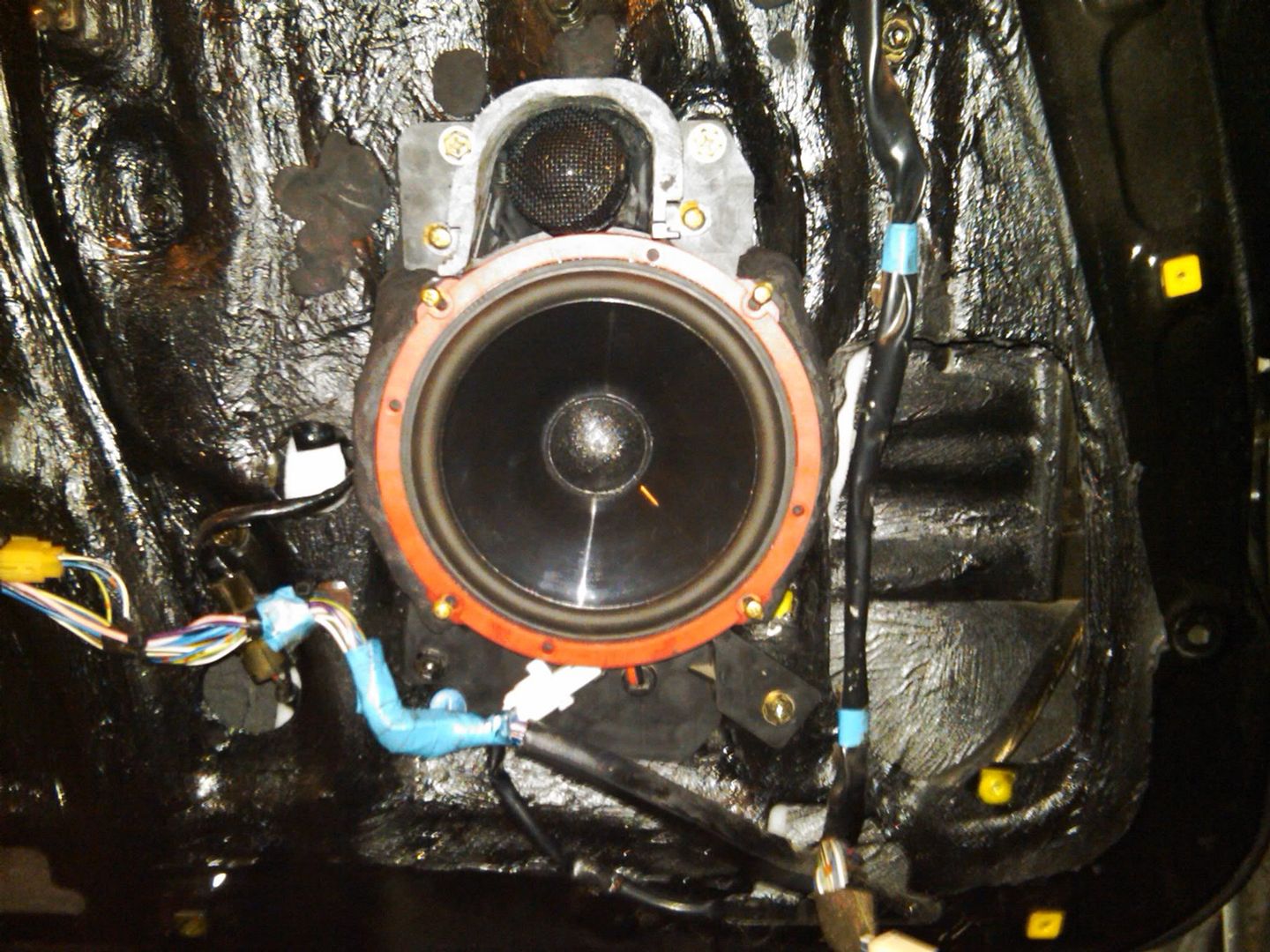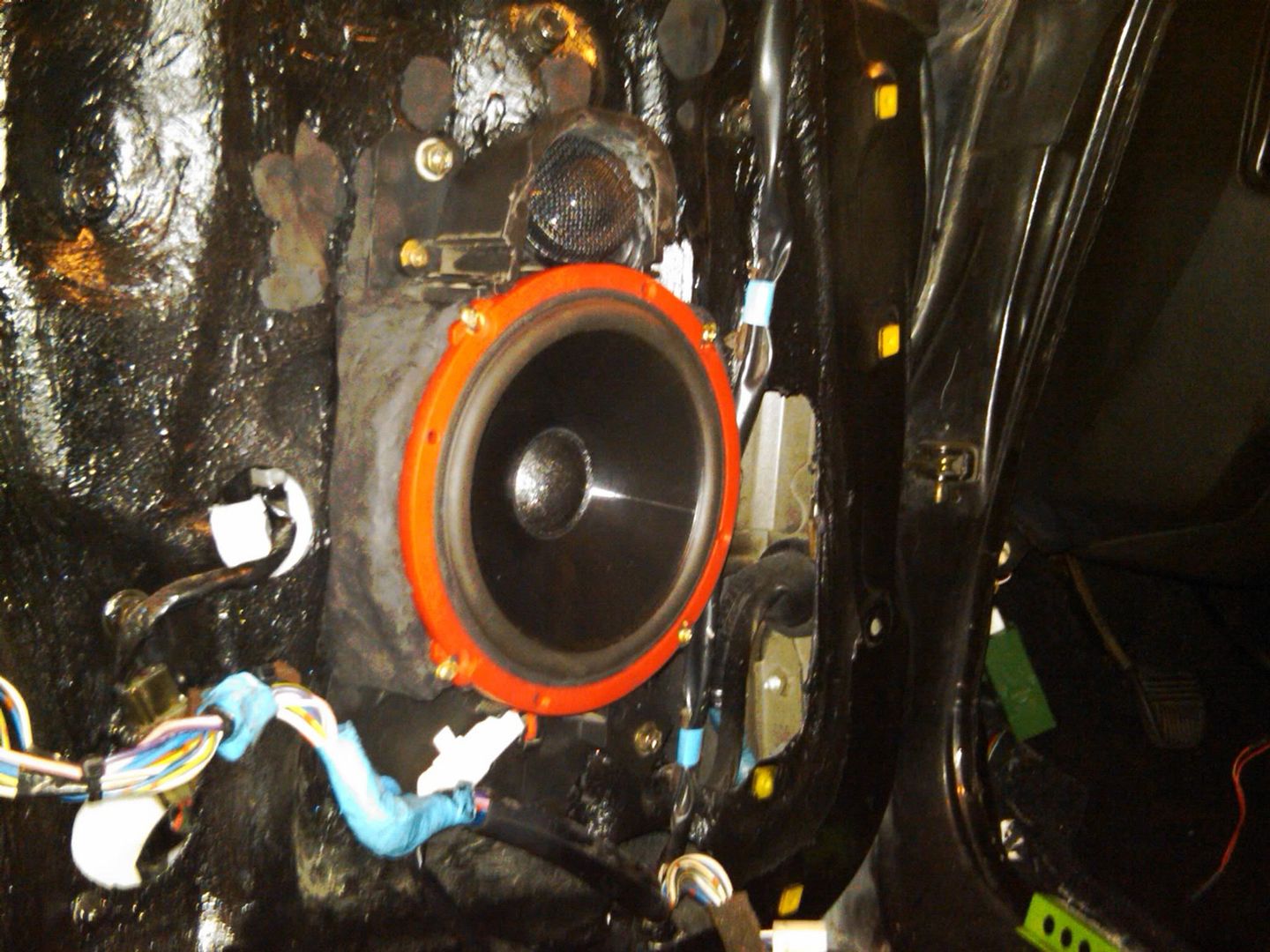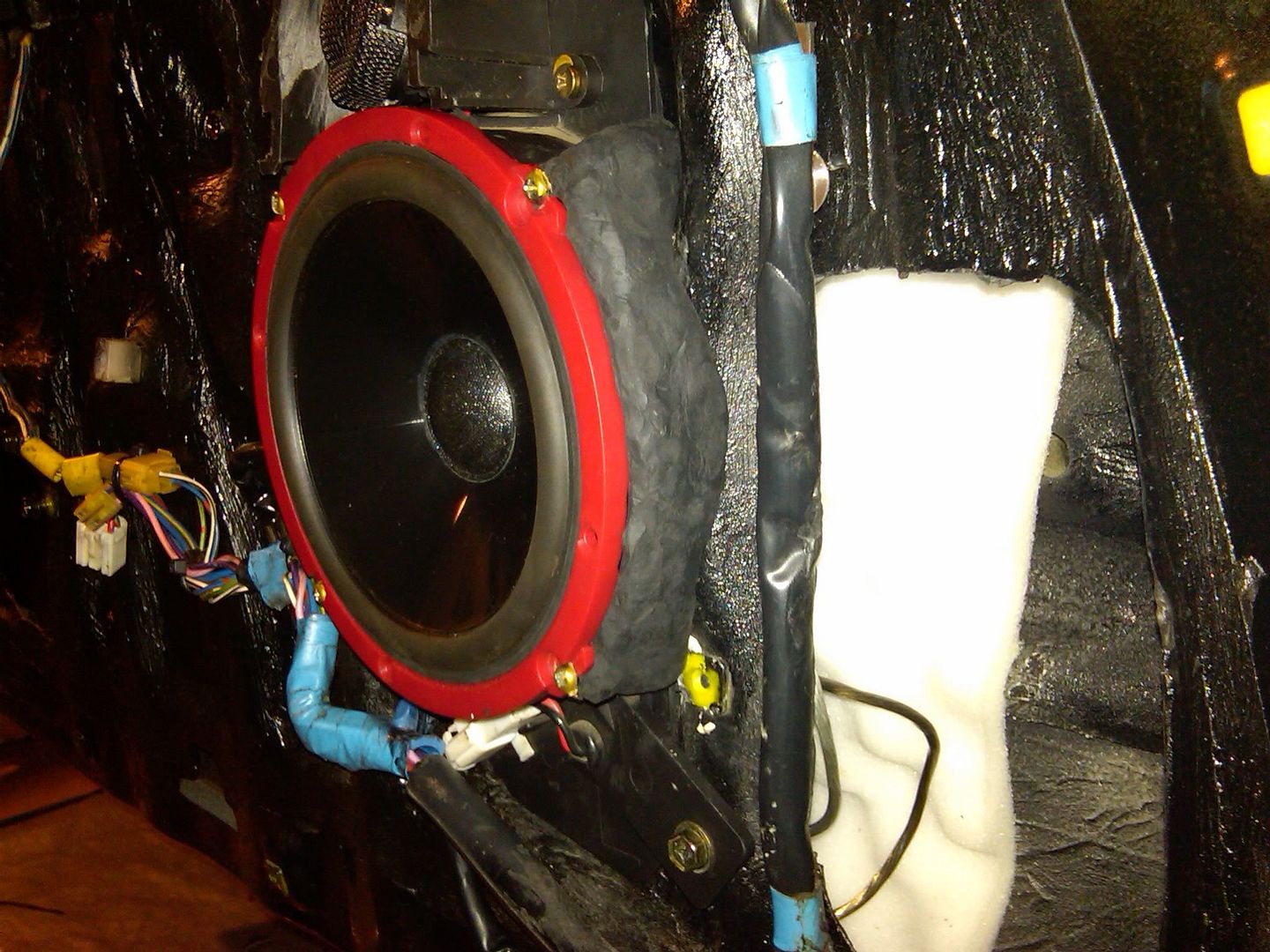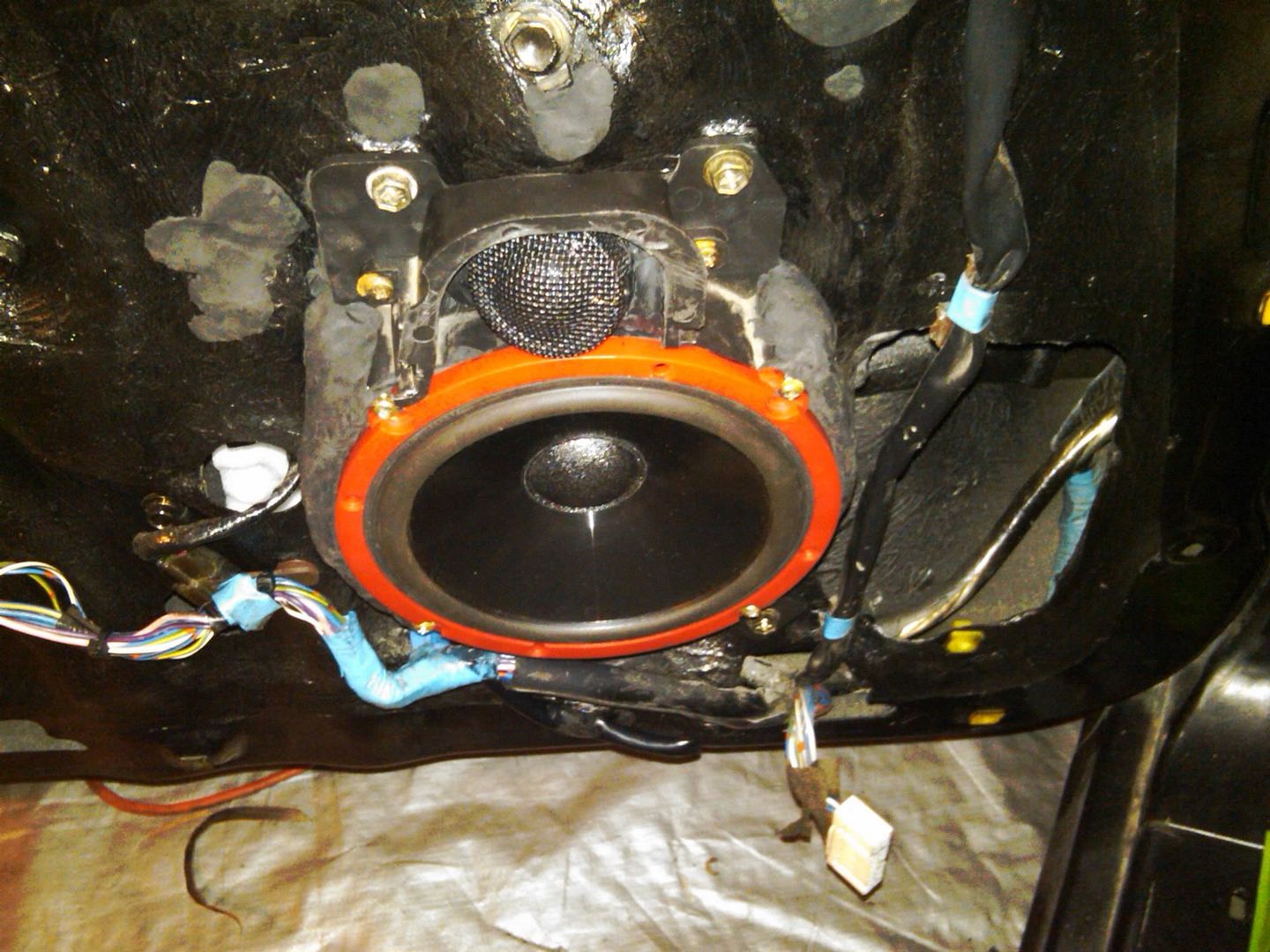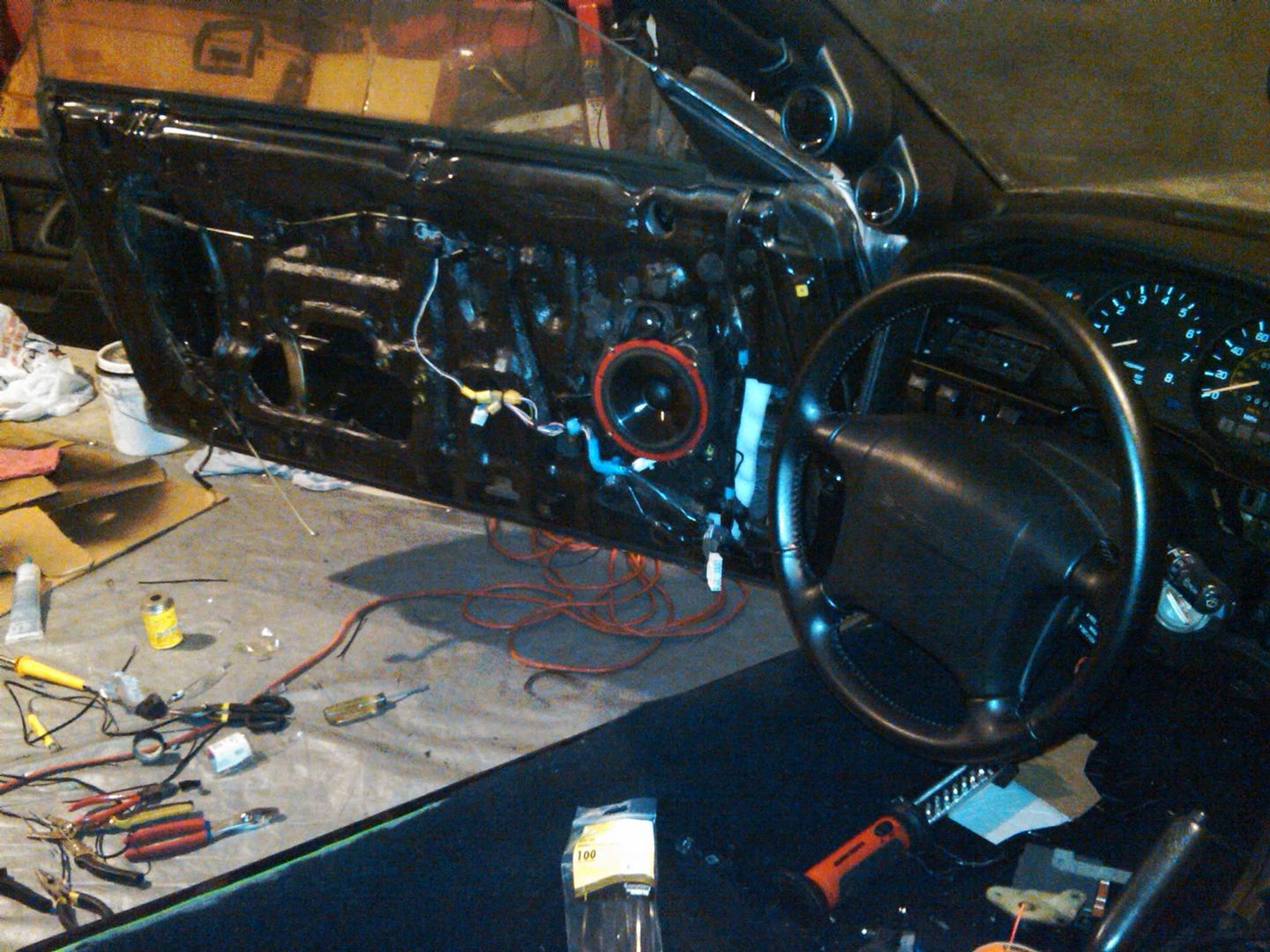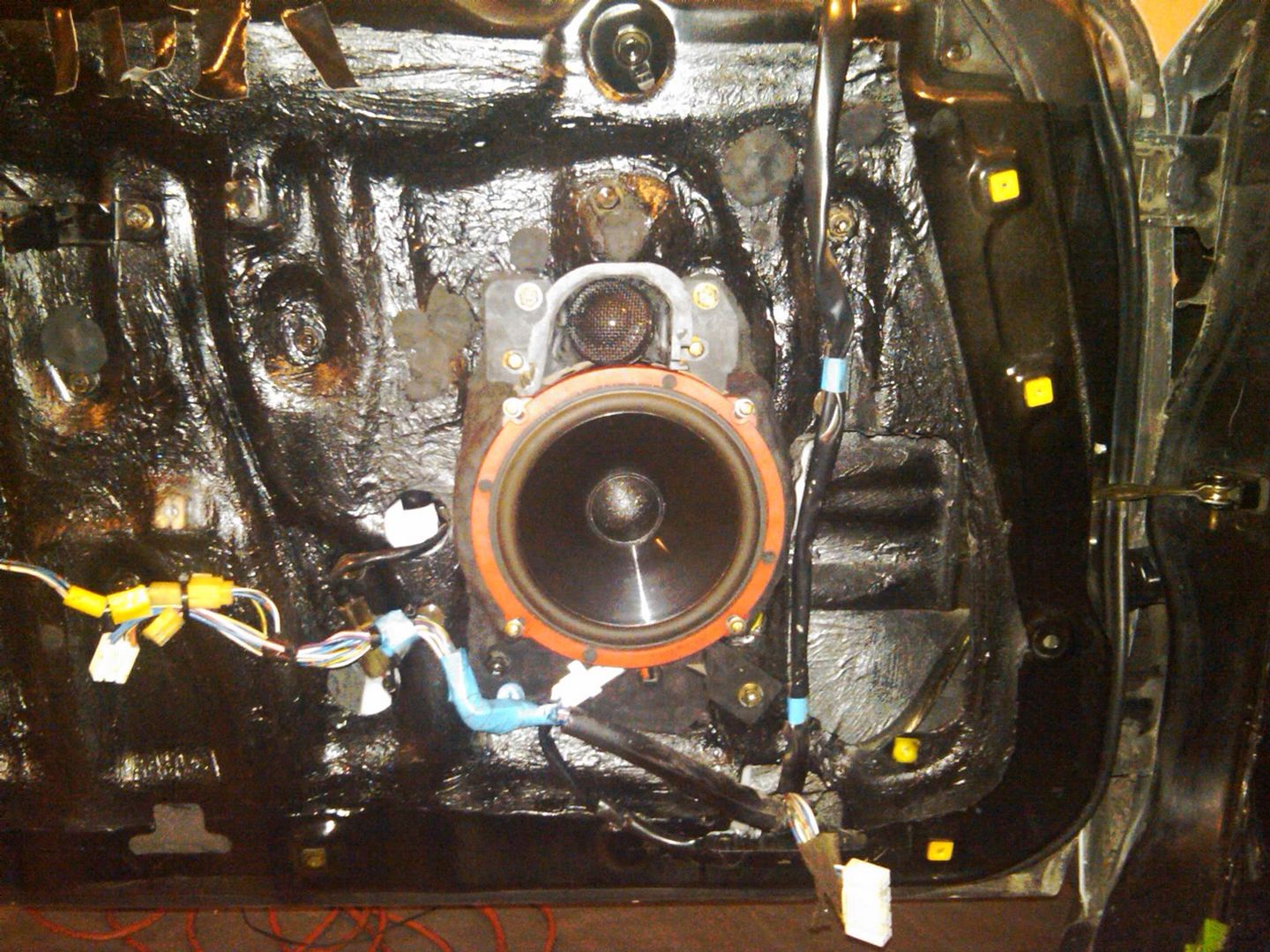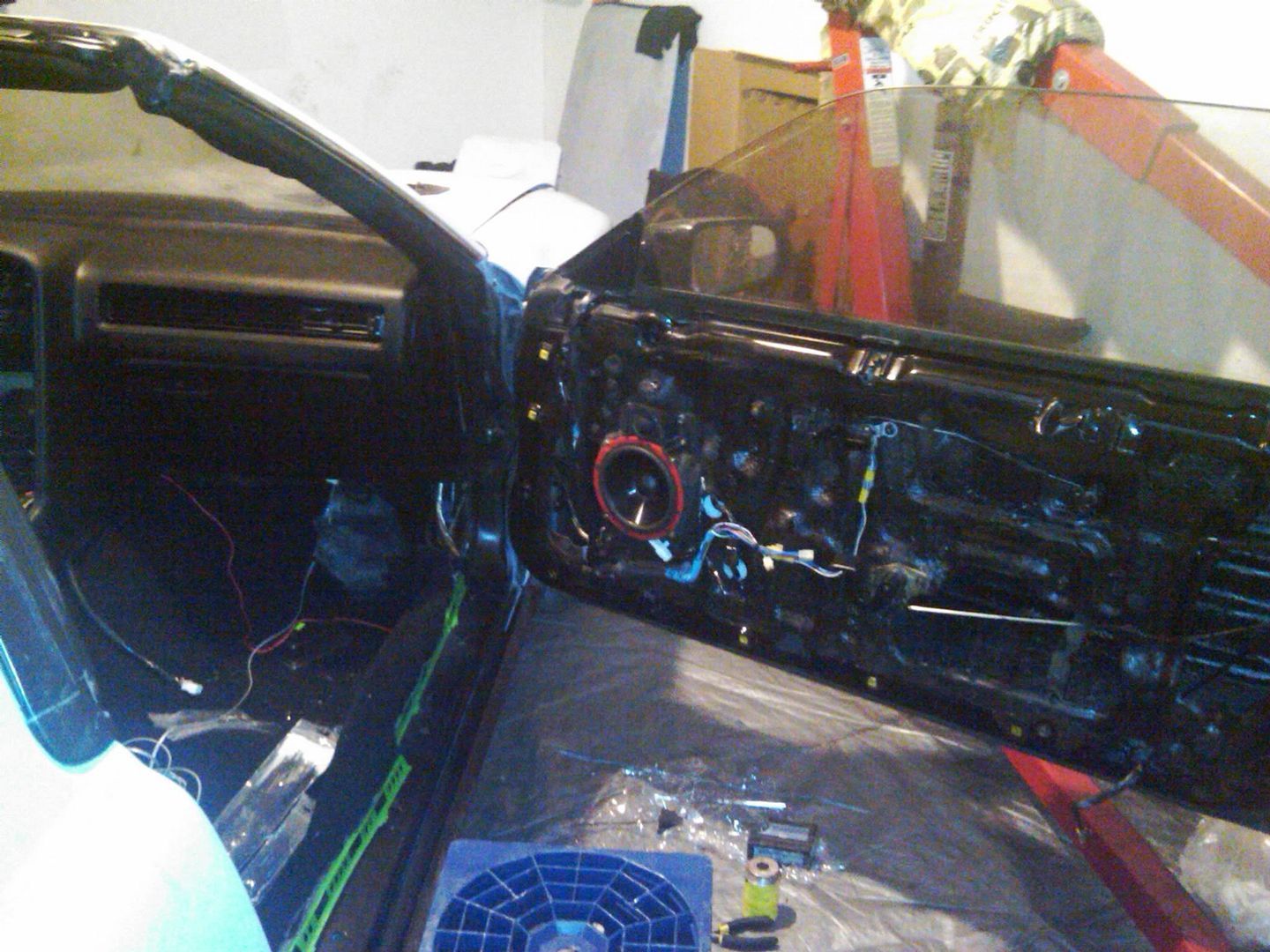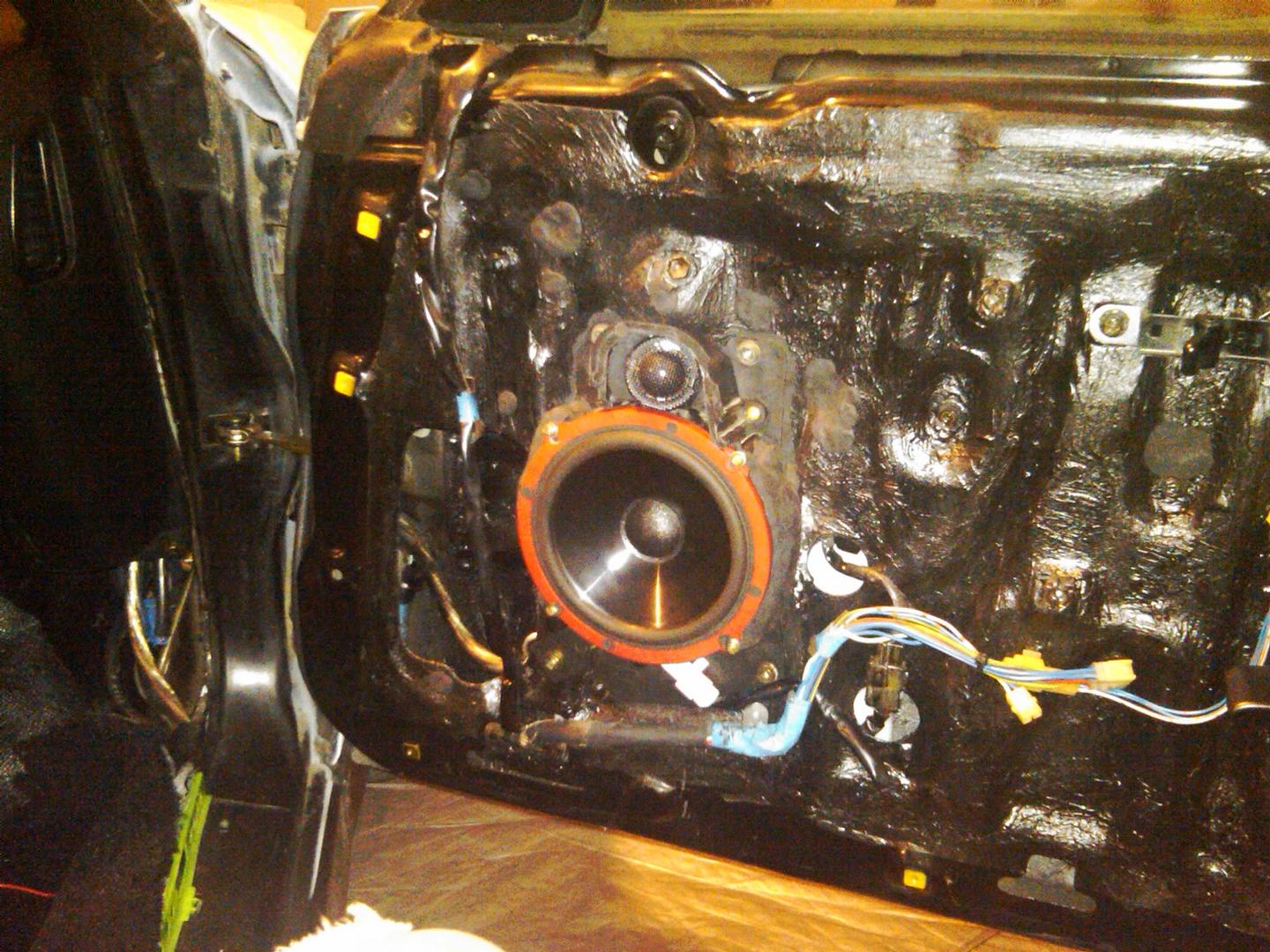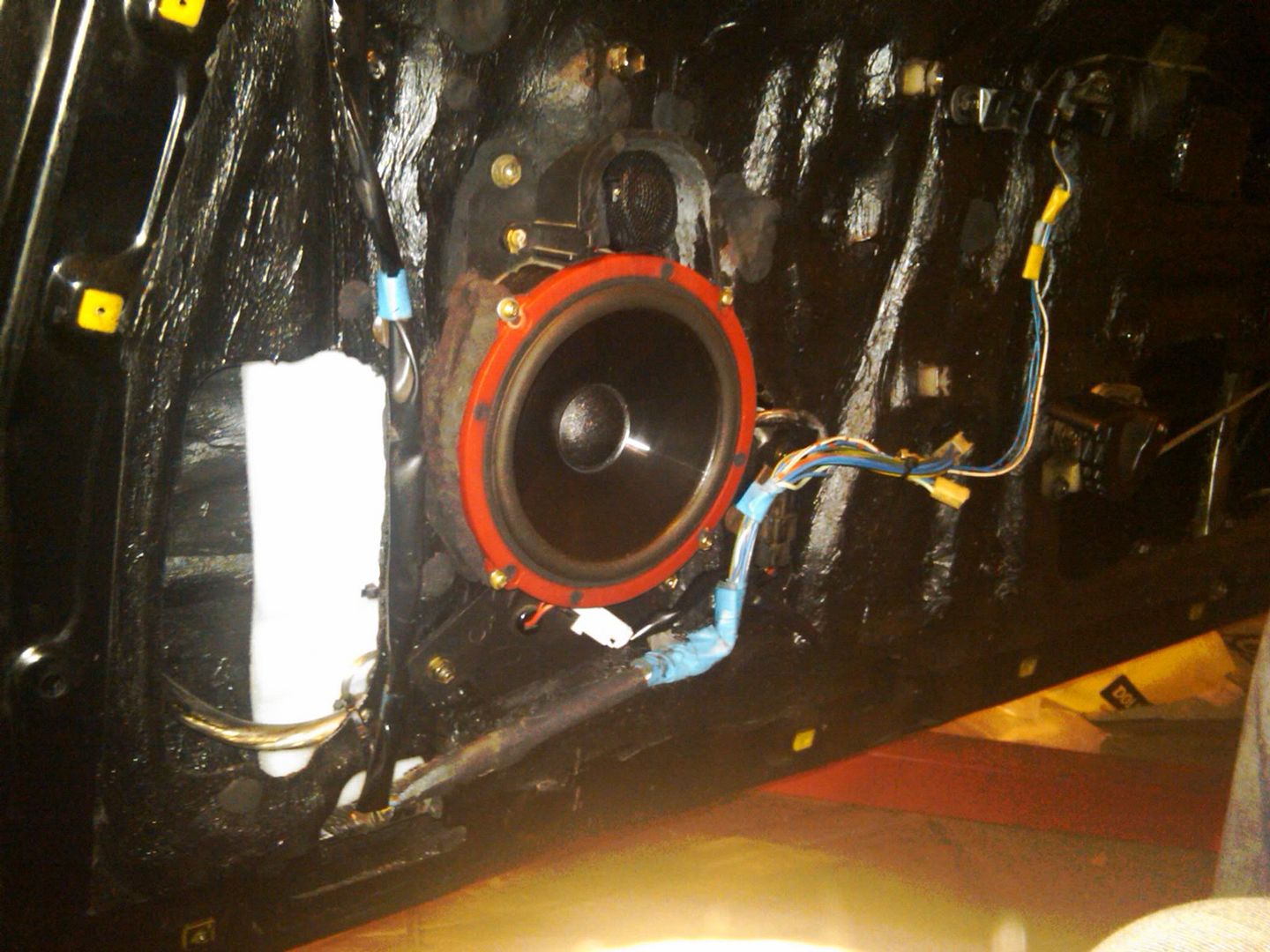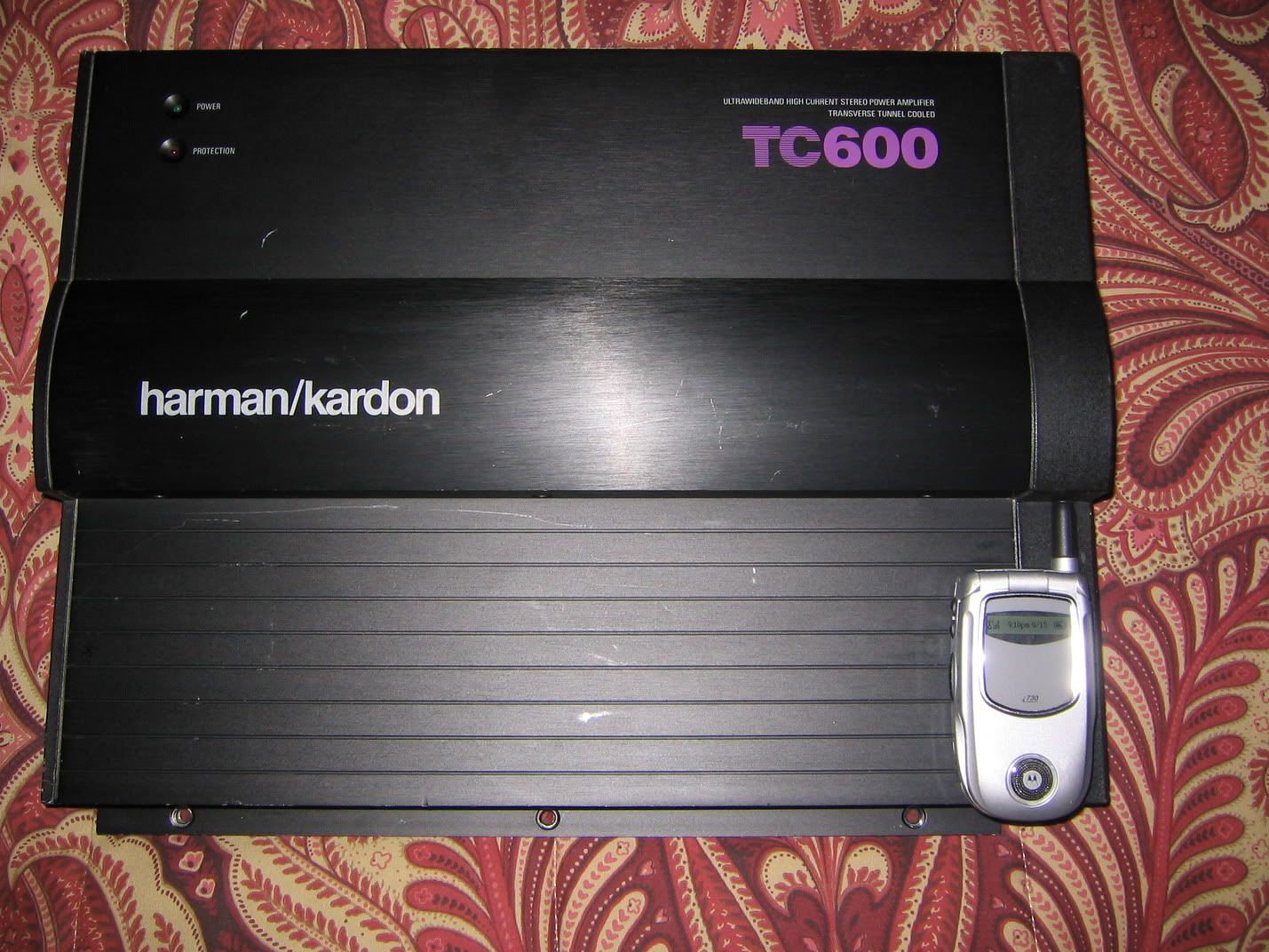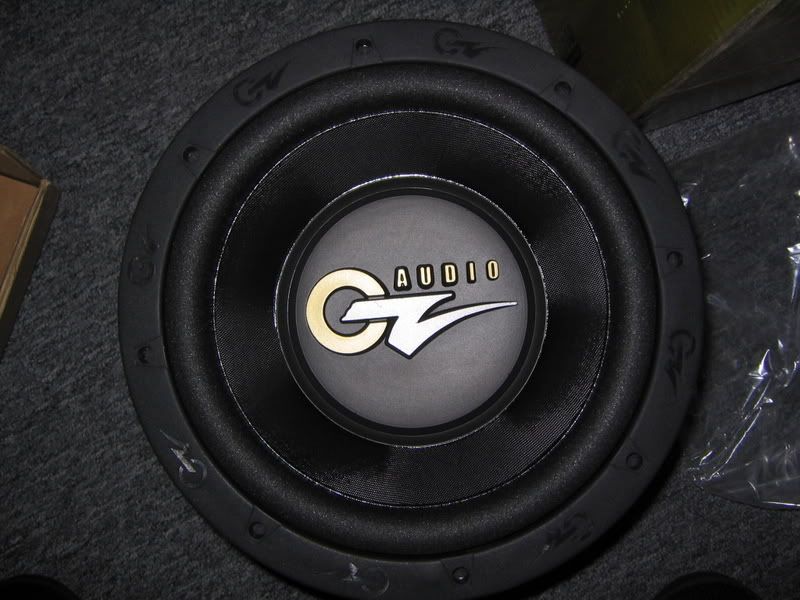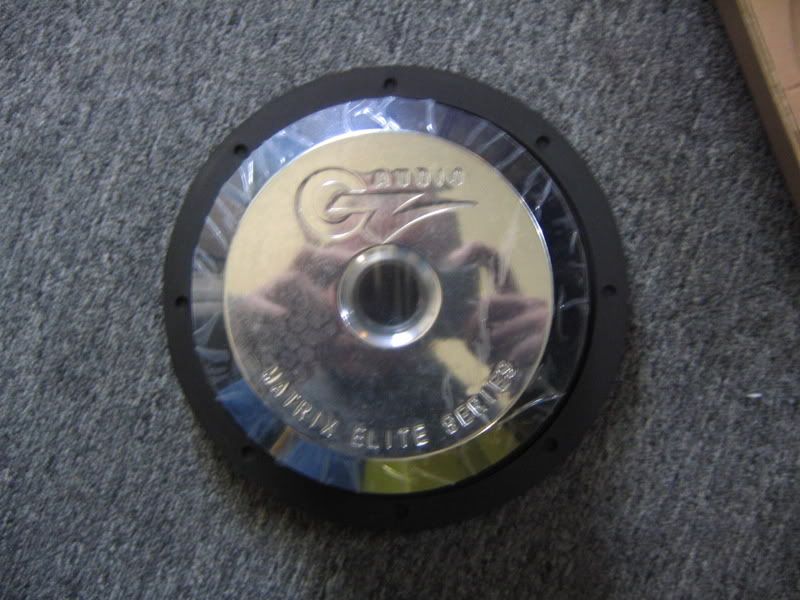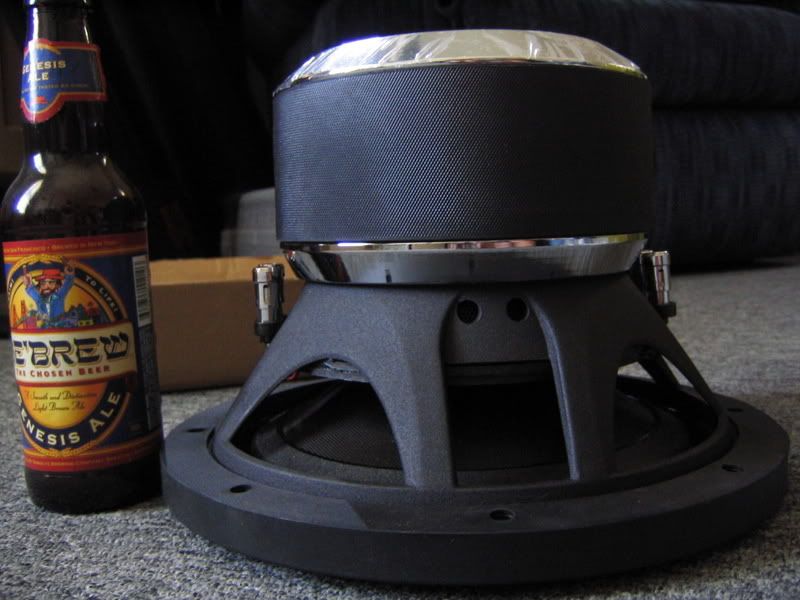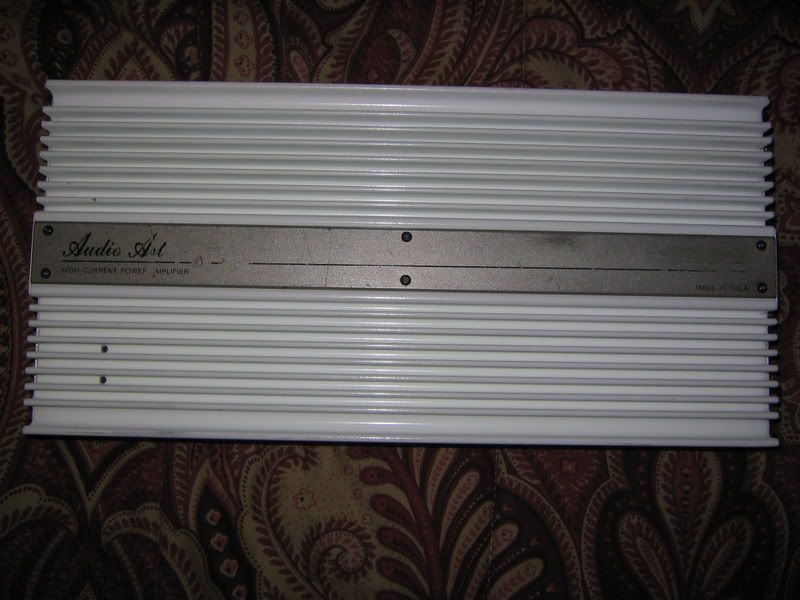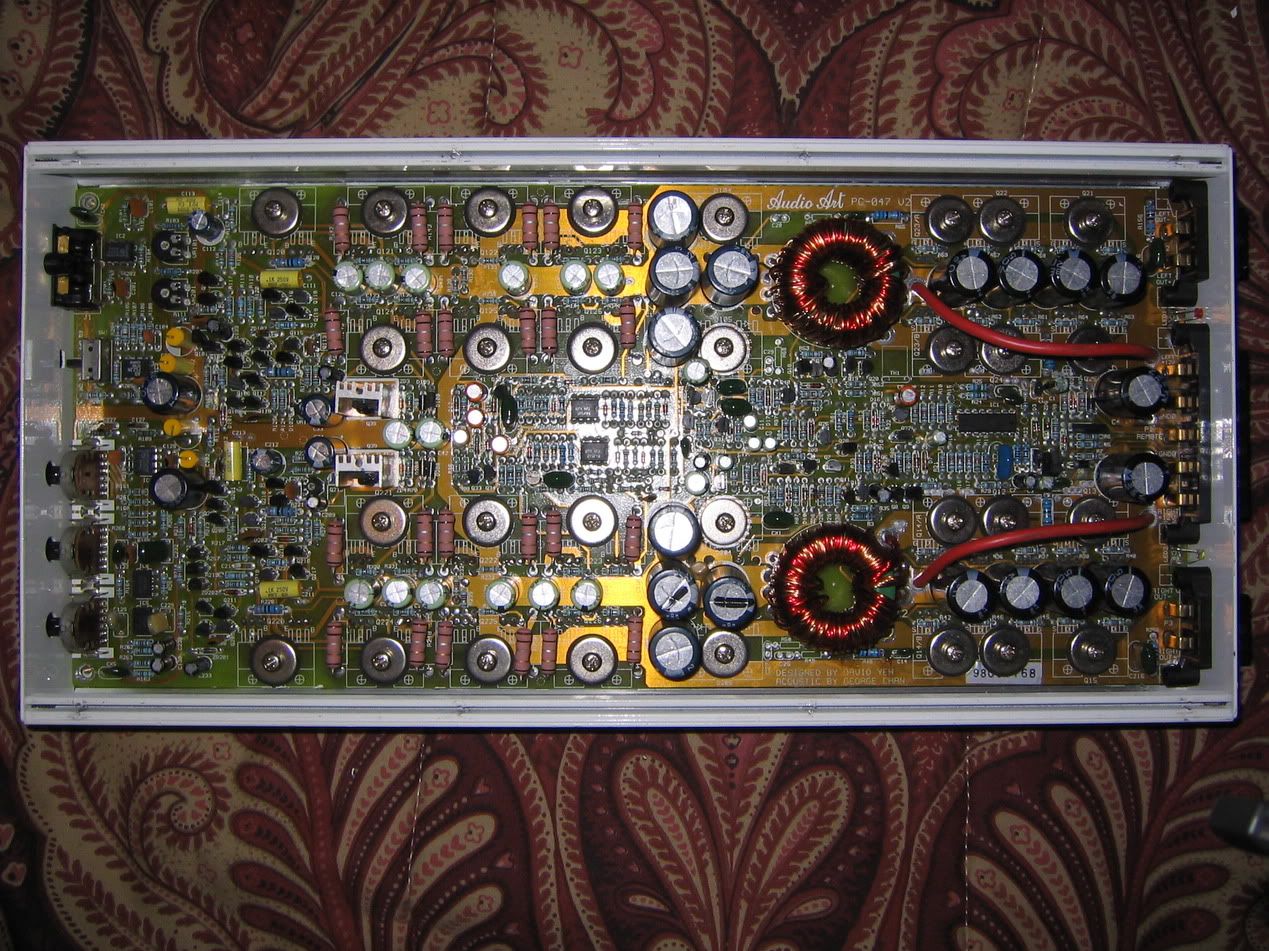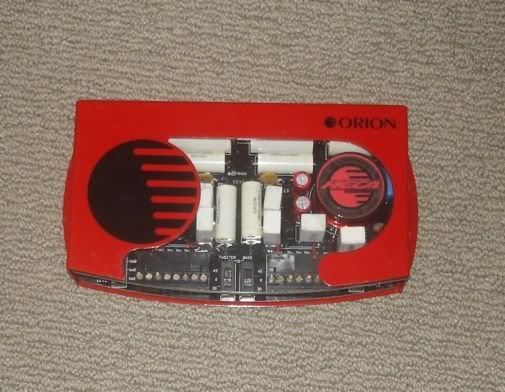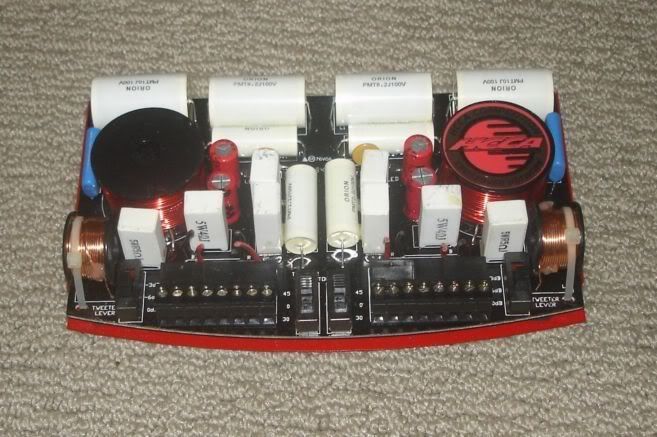I'm using a set of Orion HCCA 6S components which utilized a cast basket (not stamped) 6 1/2" midbase and 1" tweeter.
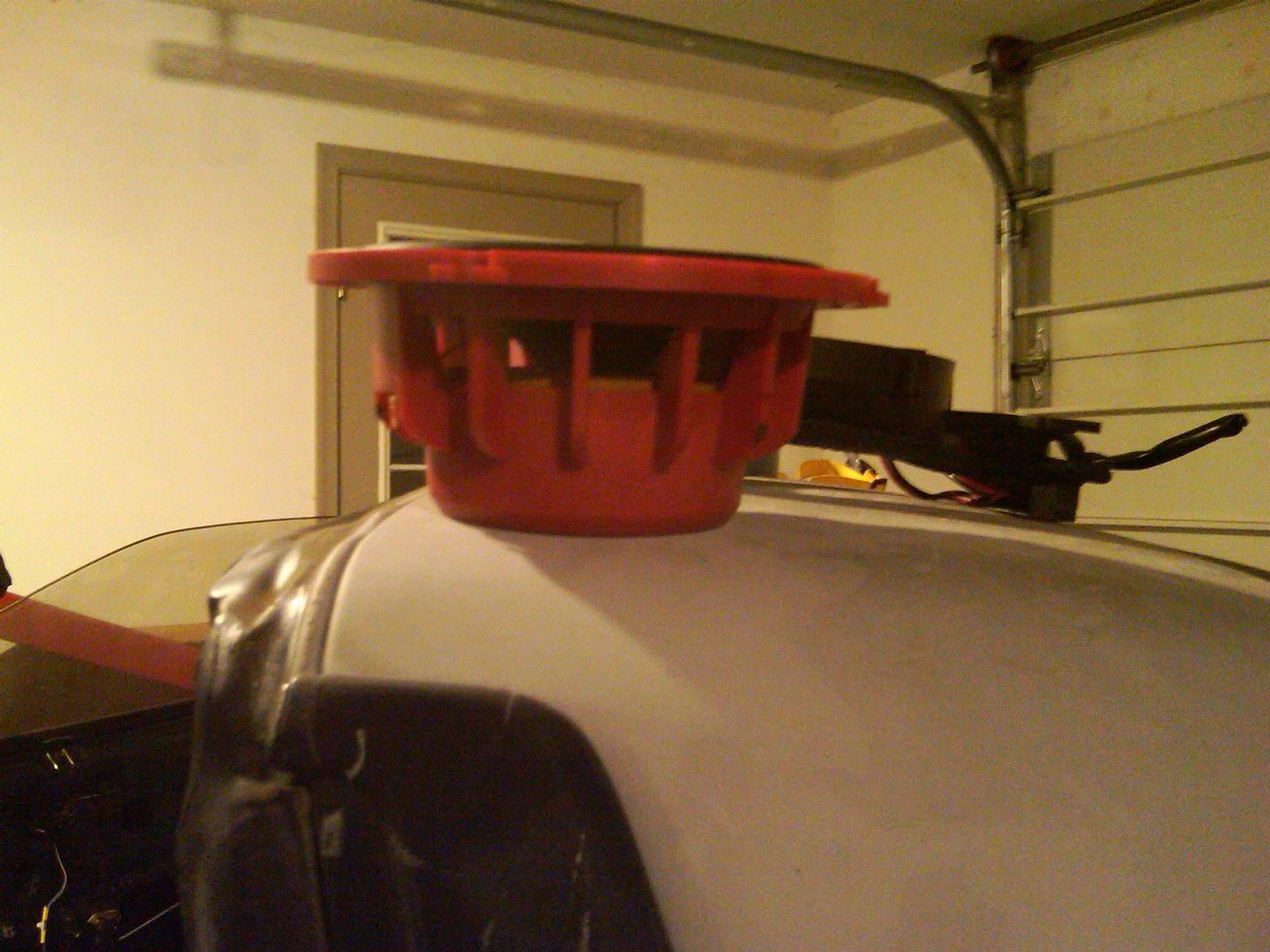
Start with a pair of speaker brackets out of a 91 or 92 Supra. I went this route rather than fabbing my own pair since the factory bracket positions the speaker in the optimum position allowing both the midbass and tweeter's sound to escape through the 91+ speaker panels.
The first thing I noticed is that the midbase basket was hitting the factory bracket on both the left and right sides where it tapers in to fit the door.
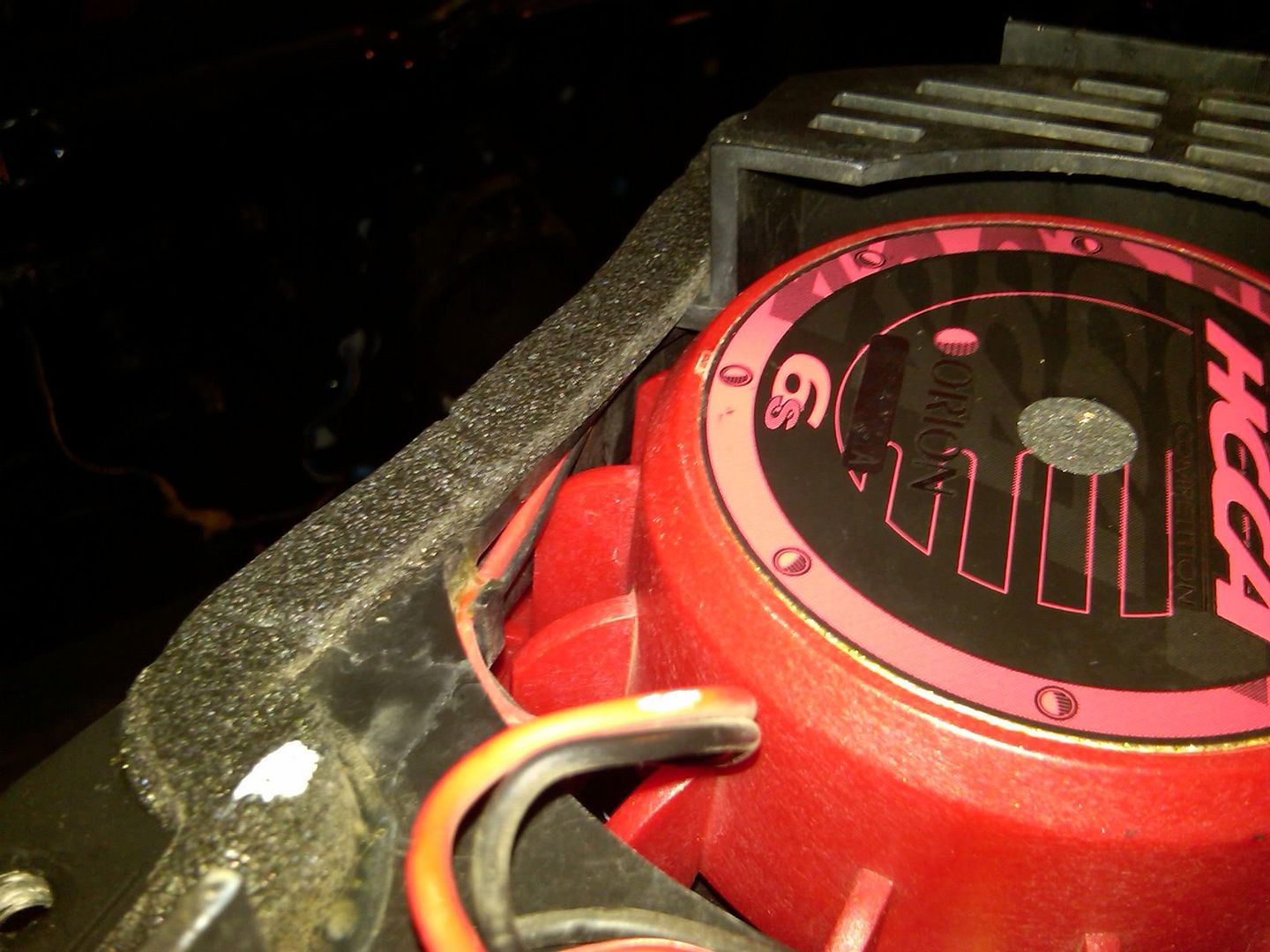
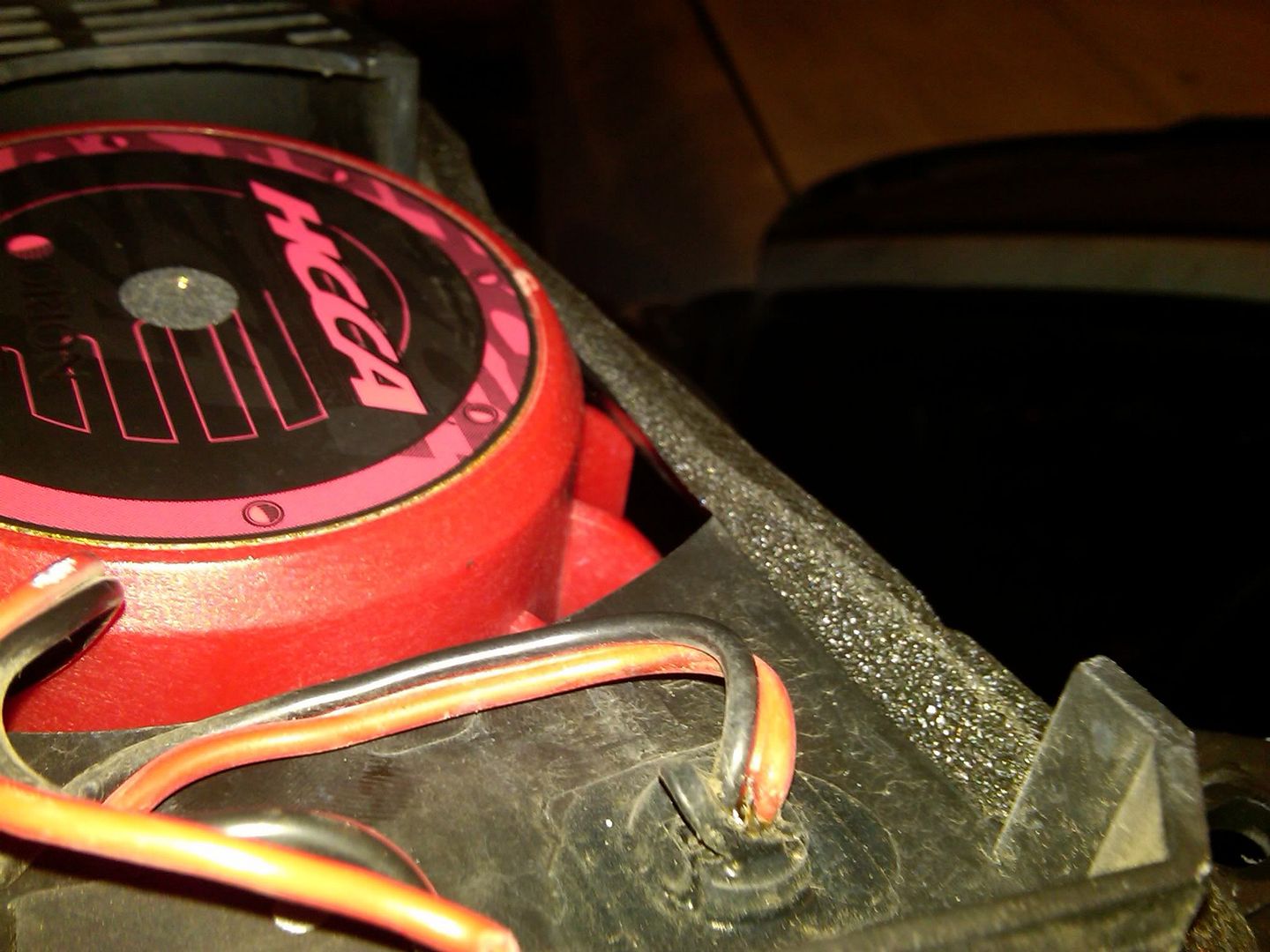
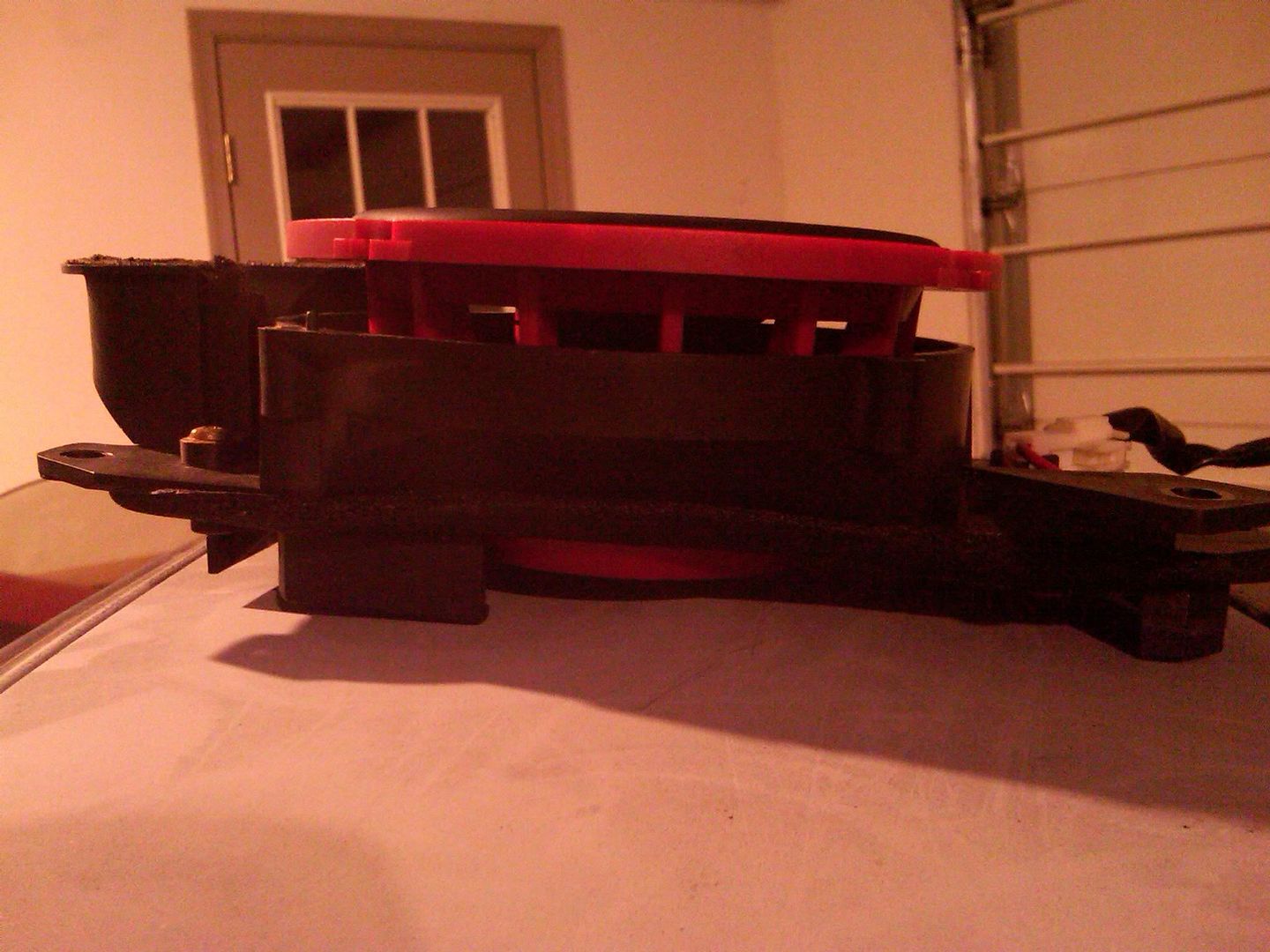
I simply cut out the sides and a little of the back-plate to accommodate the midbase.
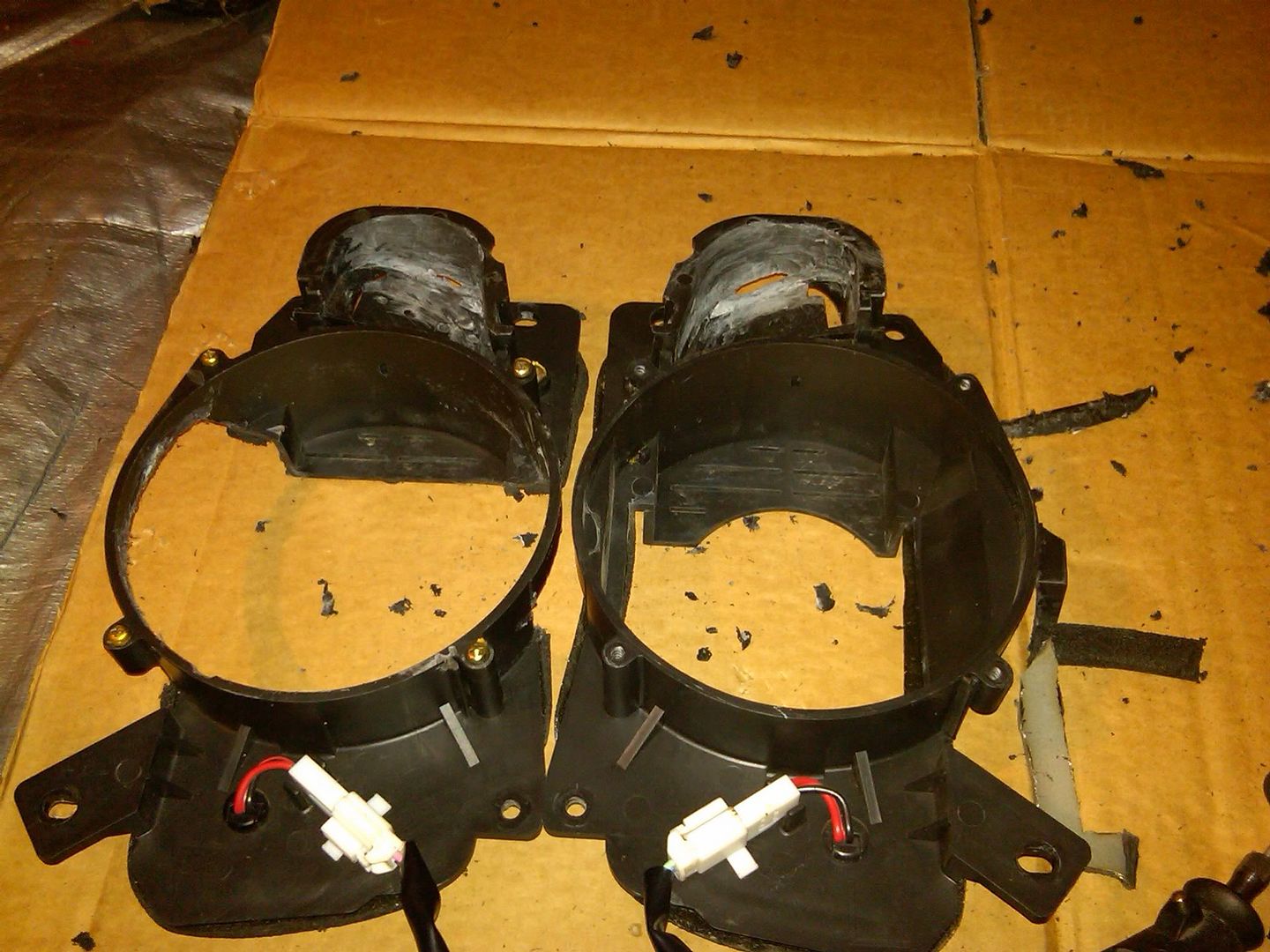
Then I noticed that the midbase clears the bracket, but now hits the door.
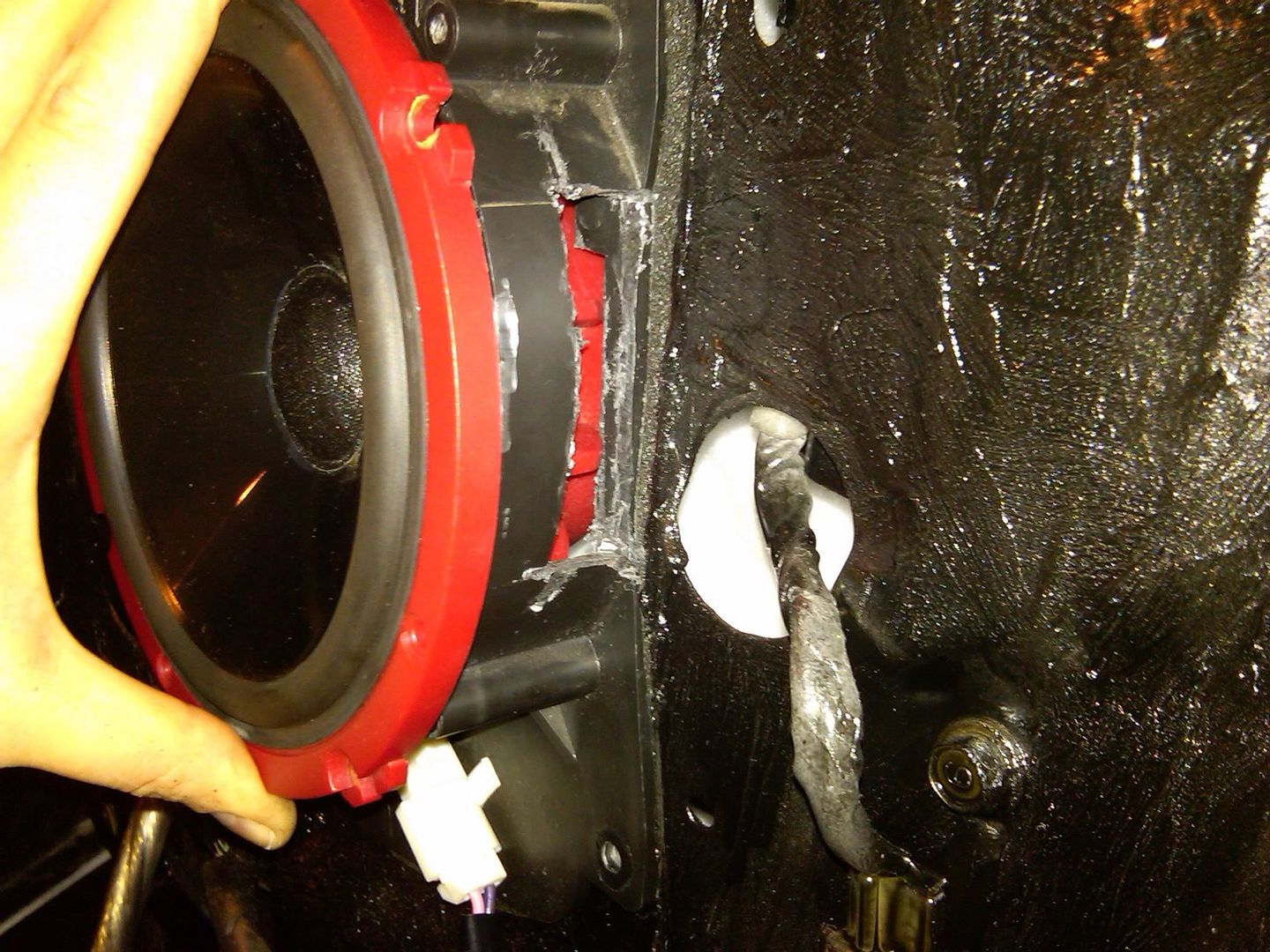
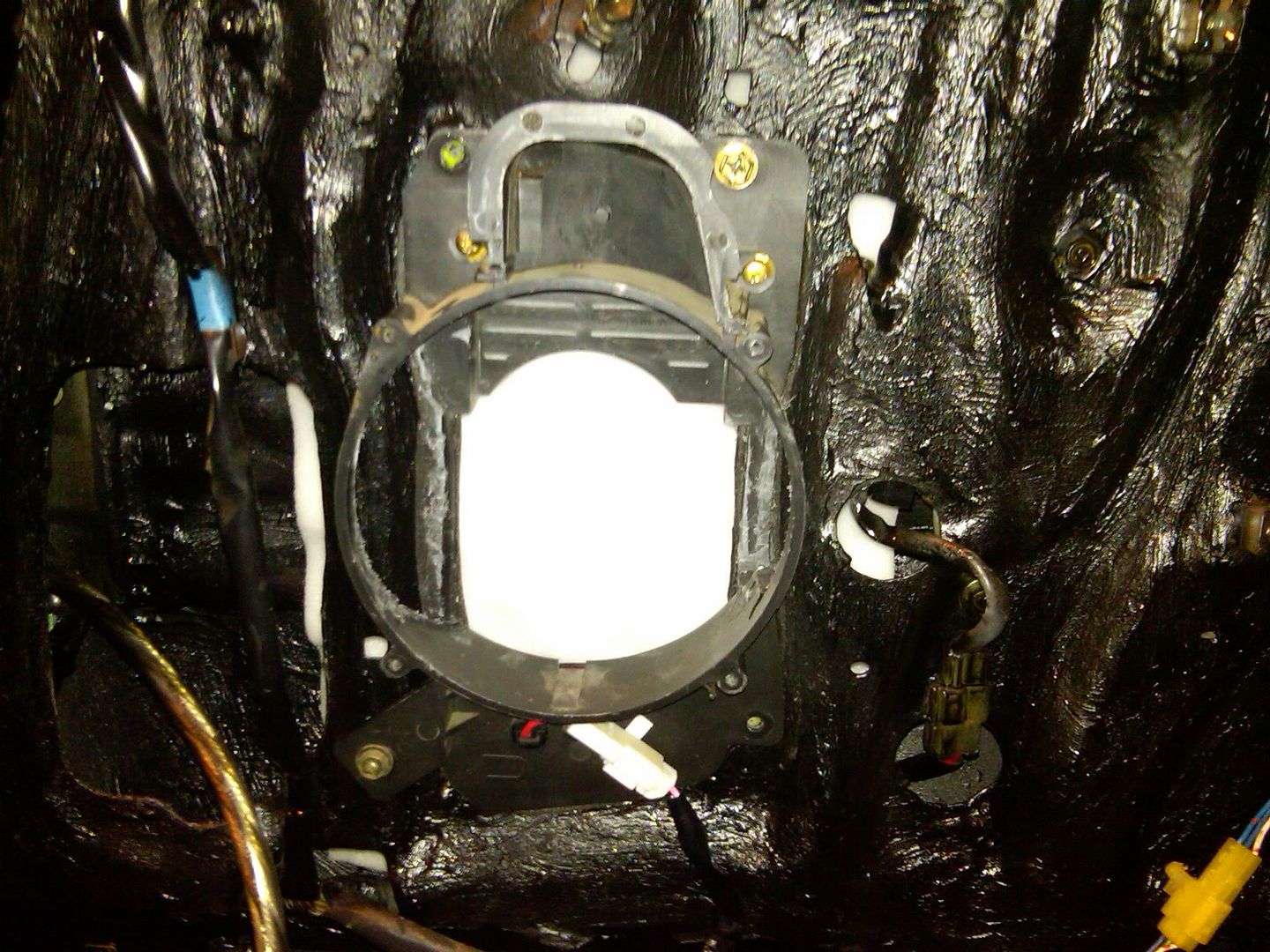
I went ahead and marked the door along the speaker ring and cut out all metal needed to make a nice fit.
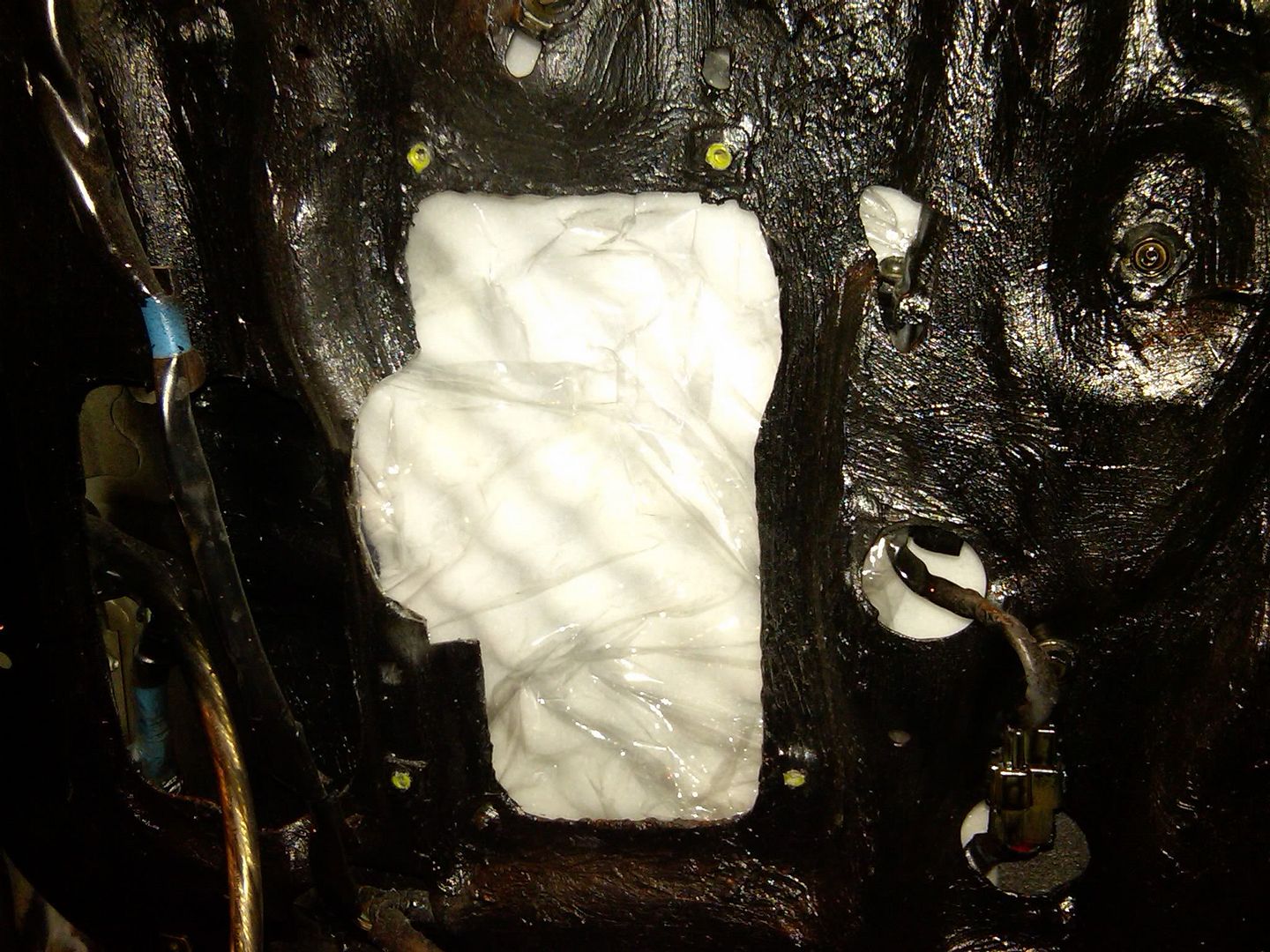
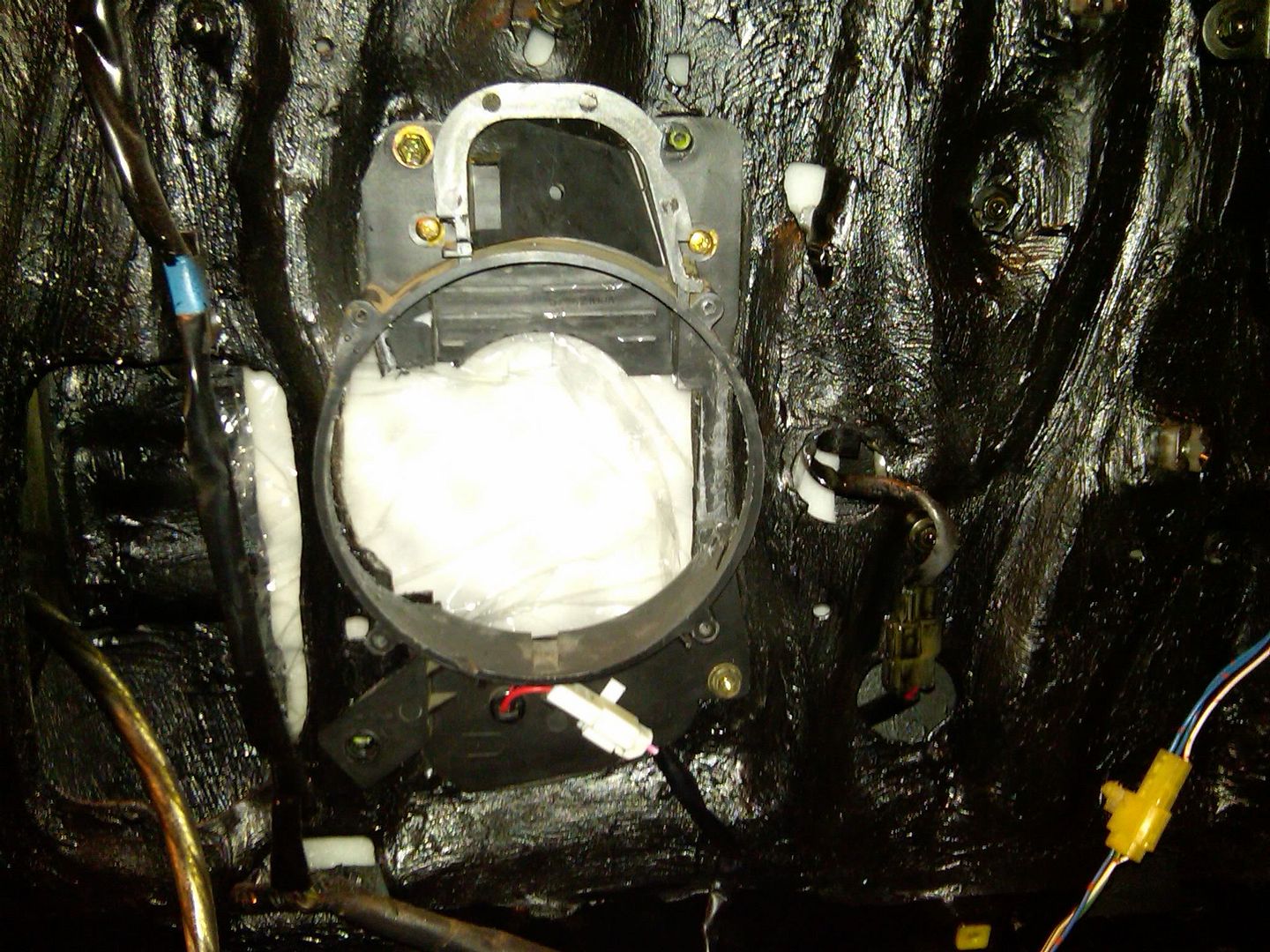
Only the right side (on passenger door, left on driver side) needs cutting for the midbase to clear, but I went a head and shaved a little of the opposite side as well to help clear the speaker terminals. I applied a healthy dose of liquid sound deadener to the back of the doors around where the bracket mounts. I went especially heavy on the part of the door where it was cut since it became quite flimsy. I applied around 3/4" to that part.
Afterwards, I sanded the inside of the tweeter housing to allow for fitment of the 1" tweeter.
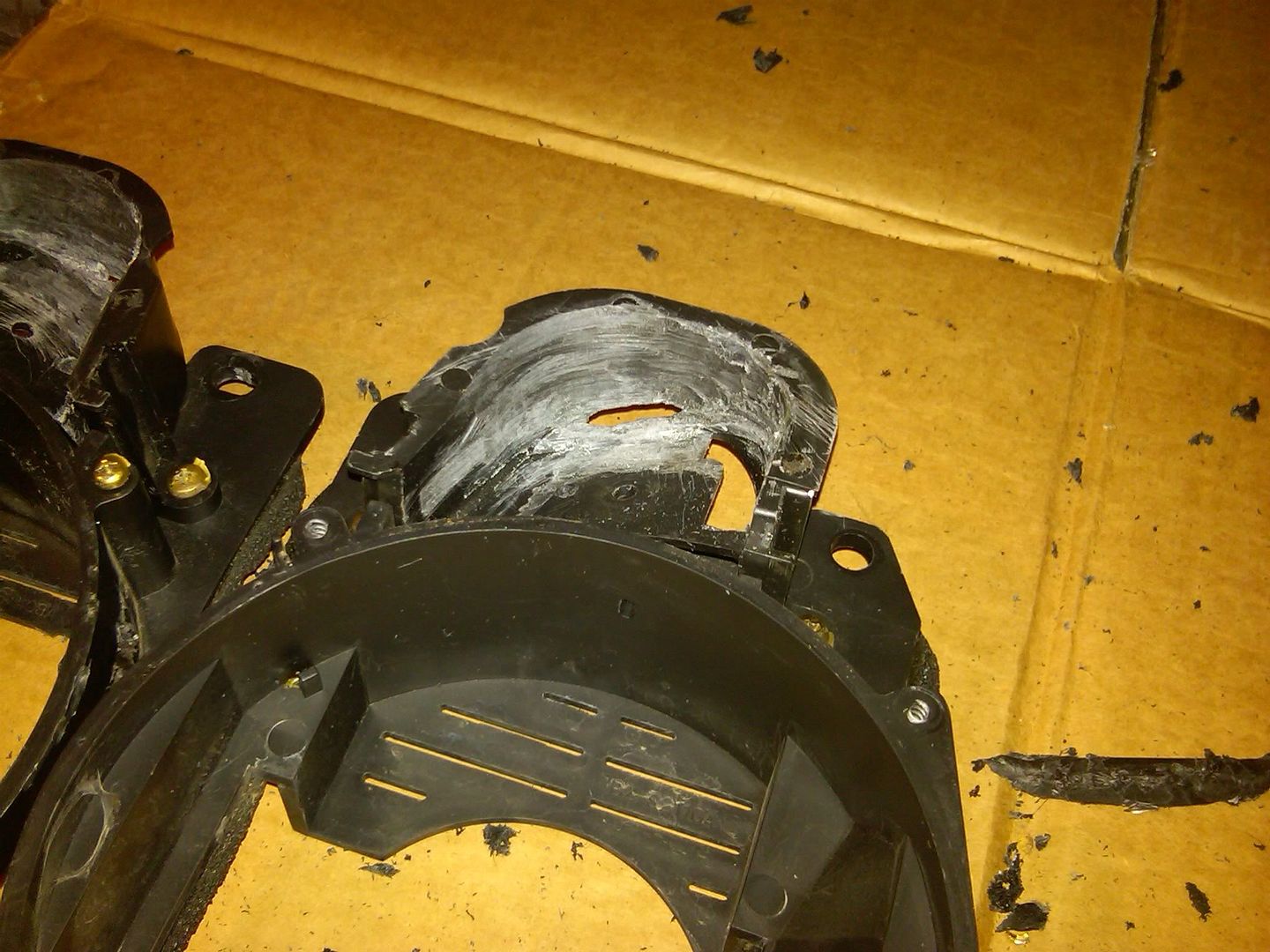
I used painters tape placed directly on the door around where the bracket mounts. Then mounted the bracket on the door and taped along the insideof the left and and right of the bracket. Then I sprayed some expanding window sealing foam along the outsides of the bracket.
After leaving the foam overnight. I removed the bracket from the door.
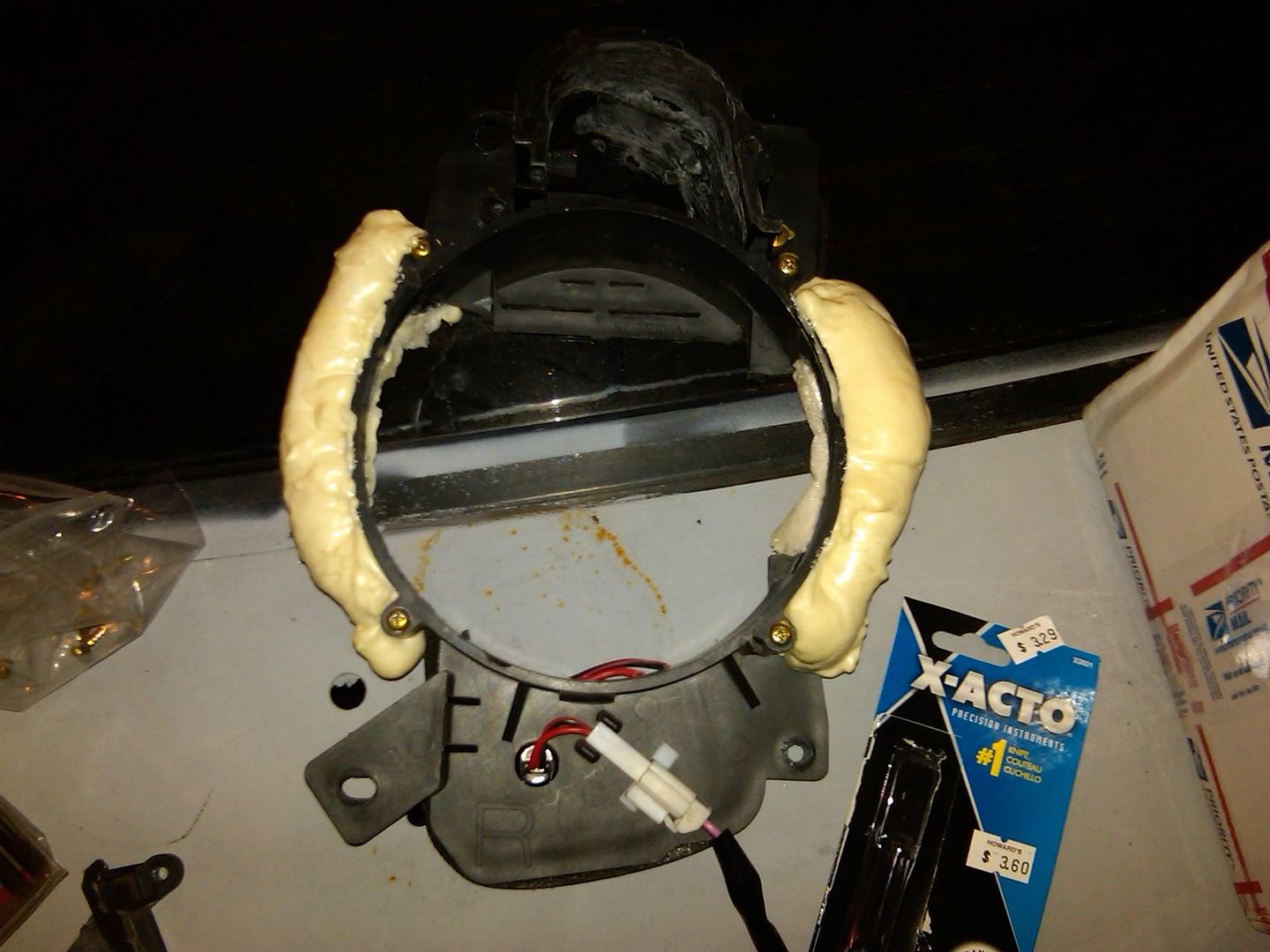
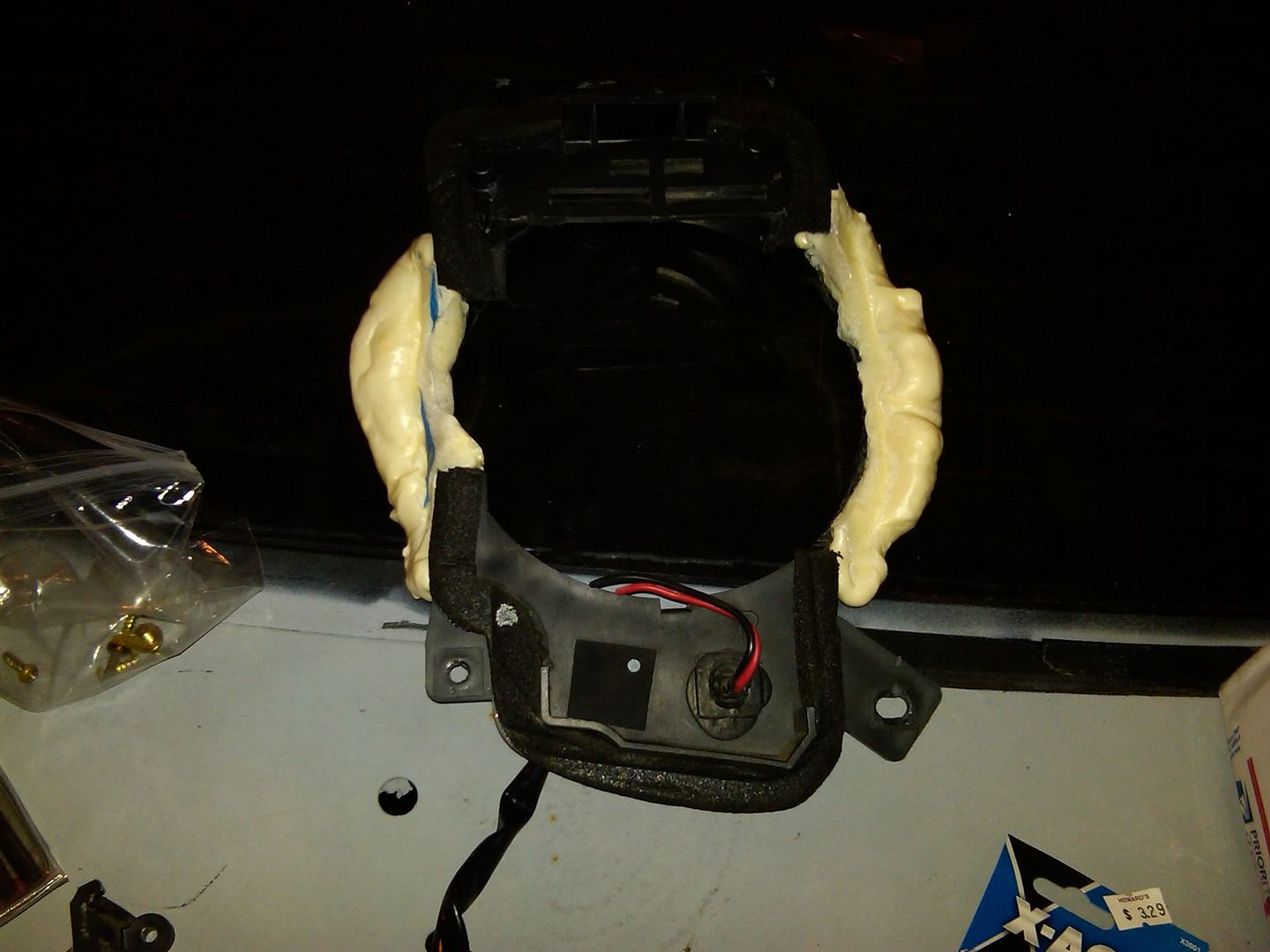
I trimmed the foam with an Exacto Knift
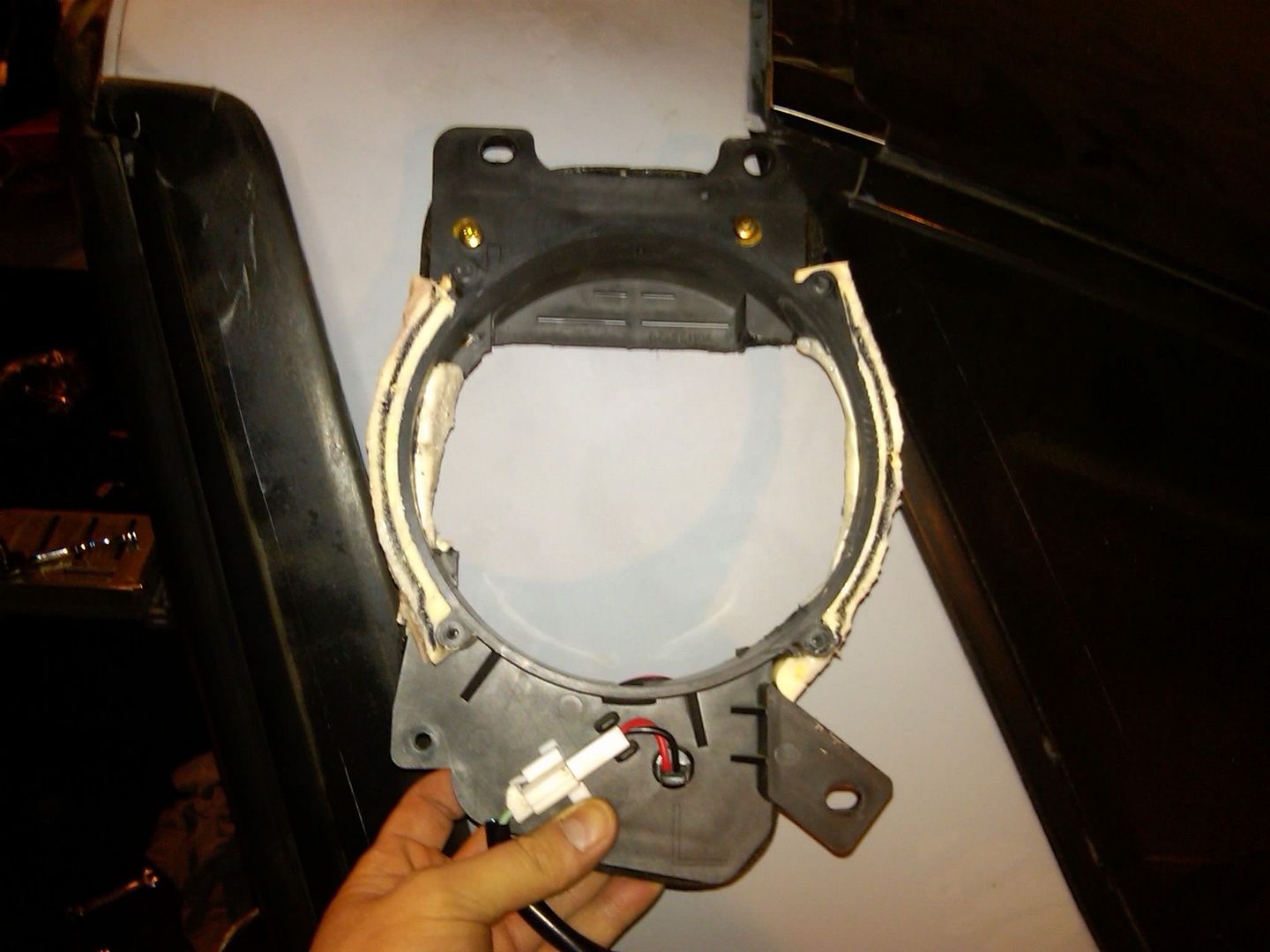
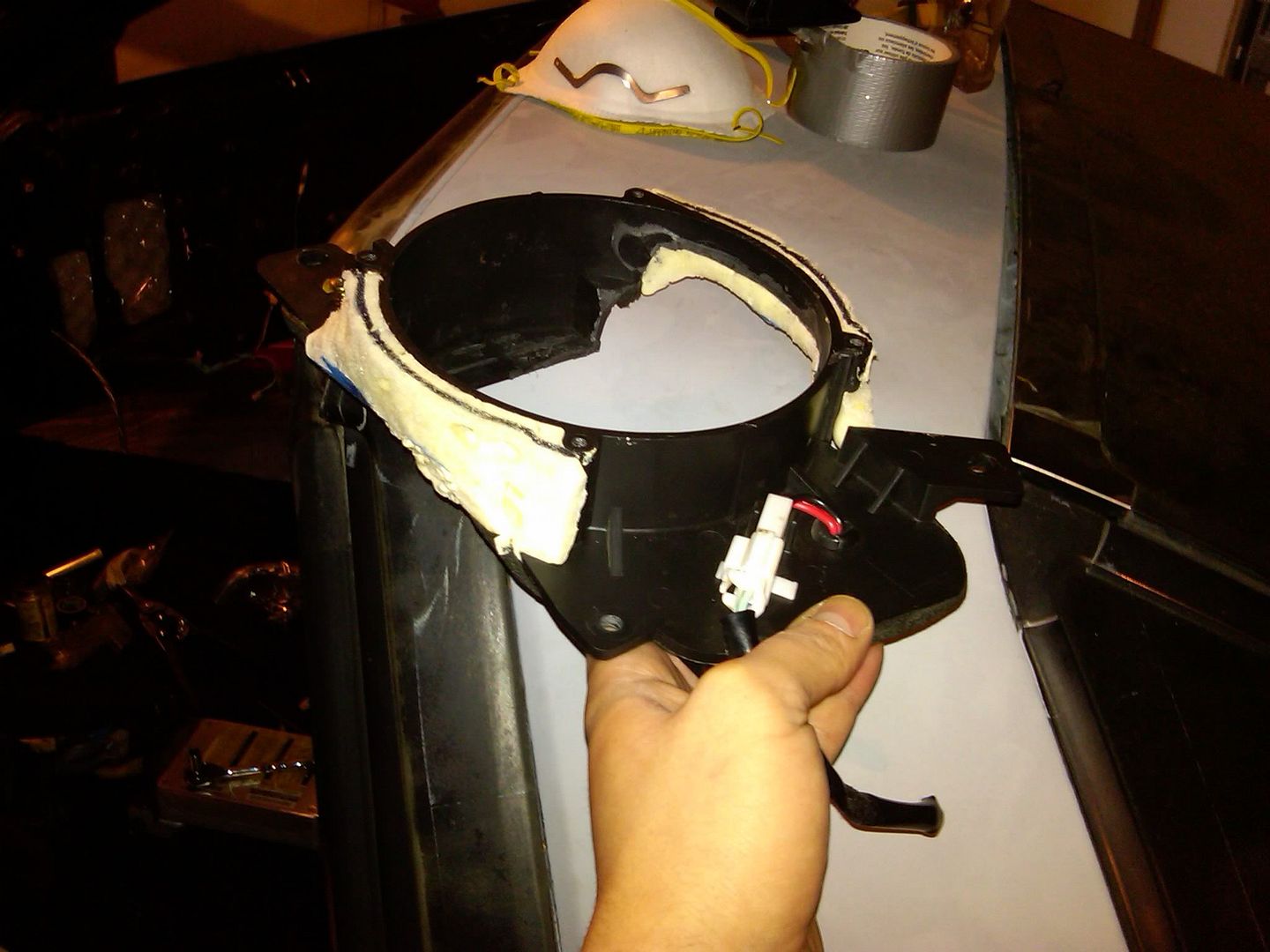
I then coated the outside of the foam with nonhardening modeling clay. I also used the around all edges for a tight seal both on the speaker ring and the back side of the bracket.
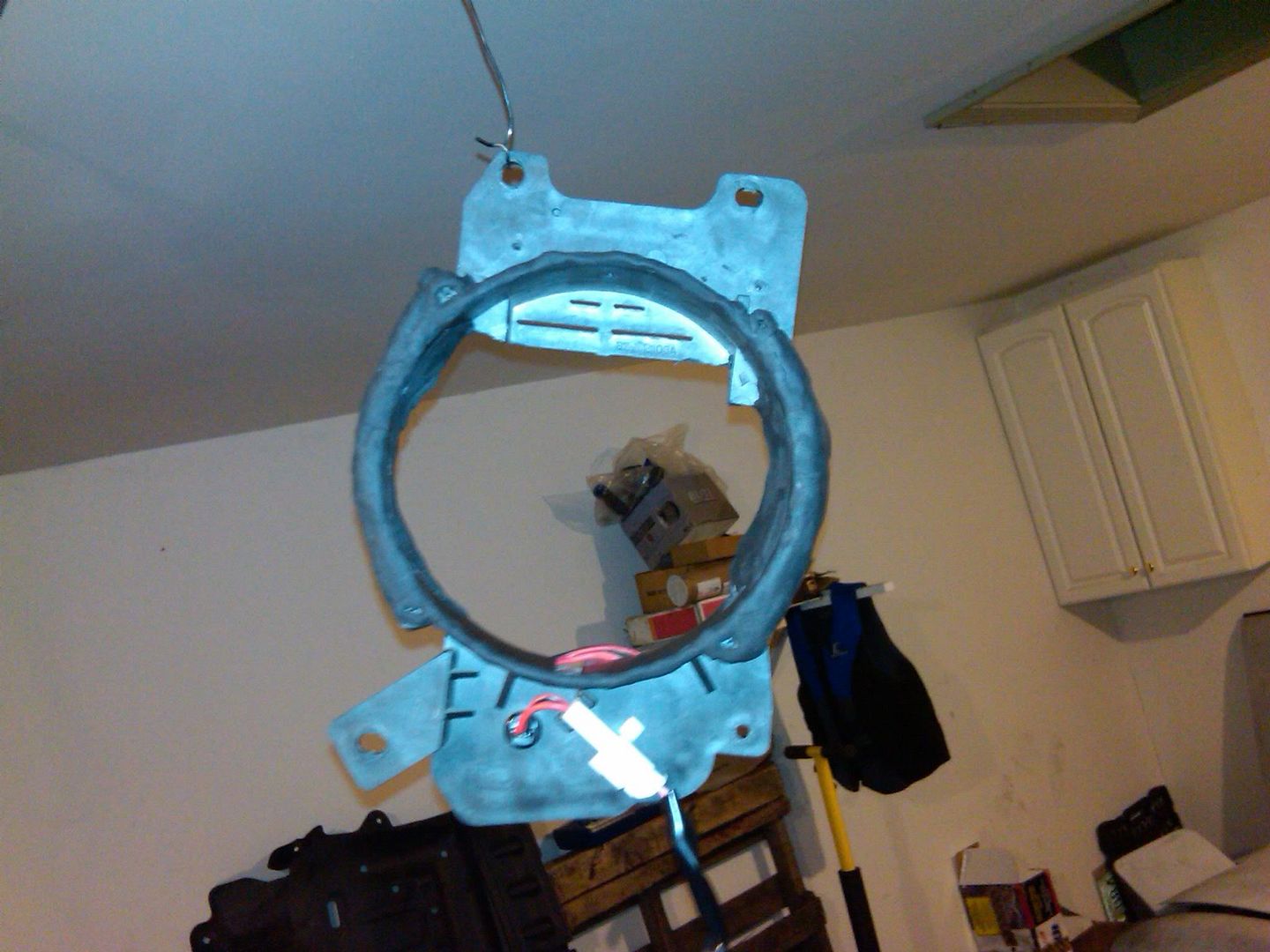
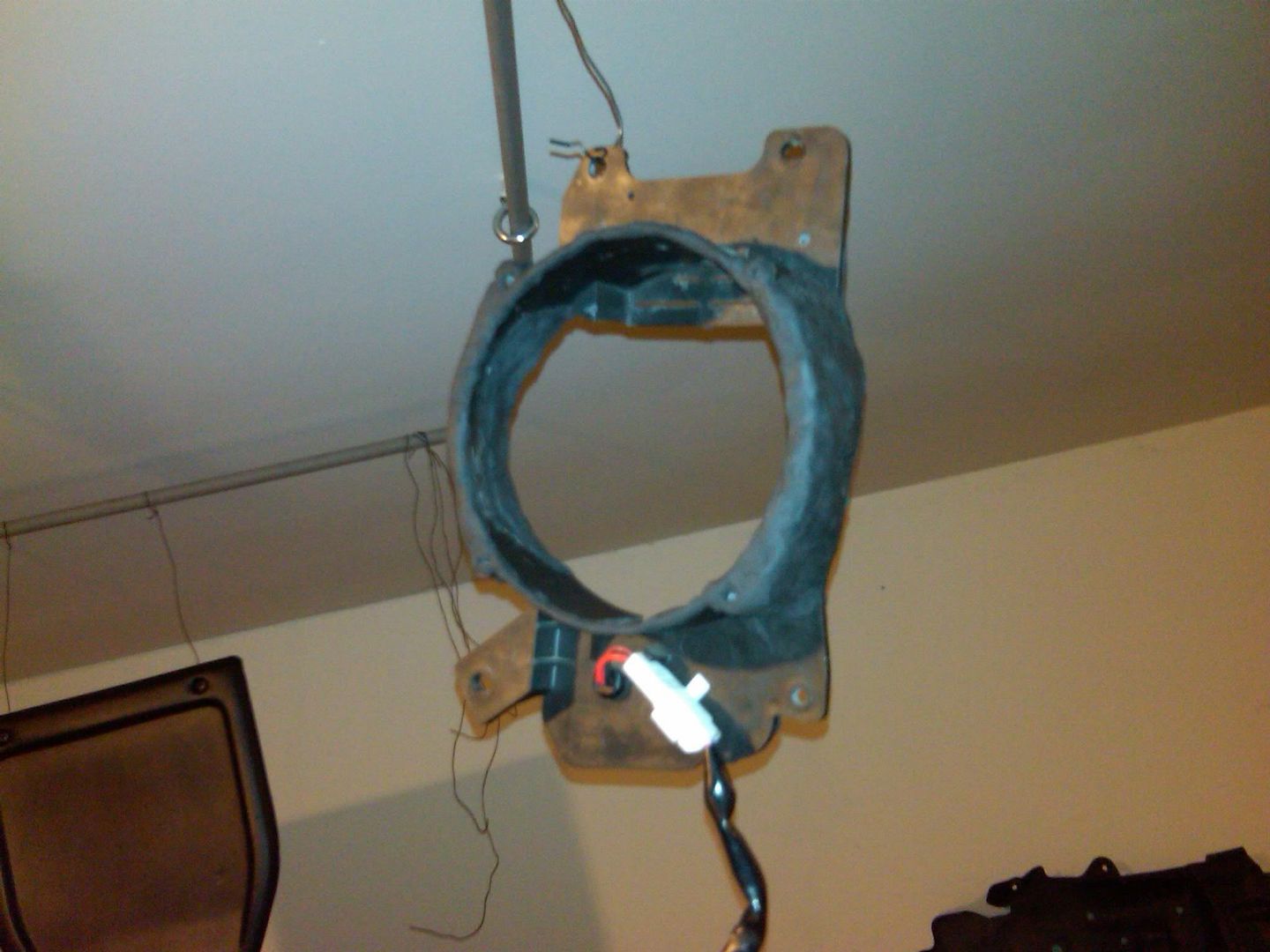
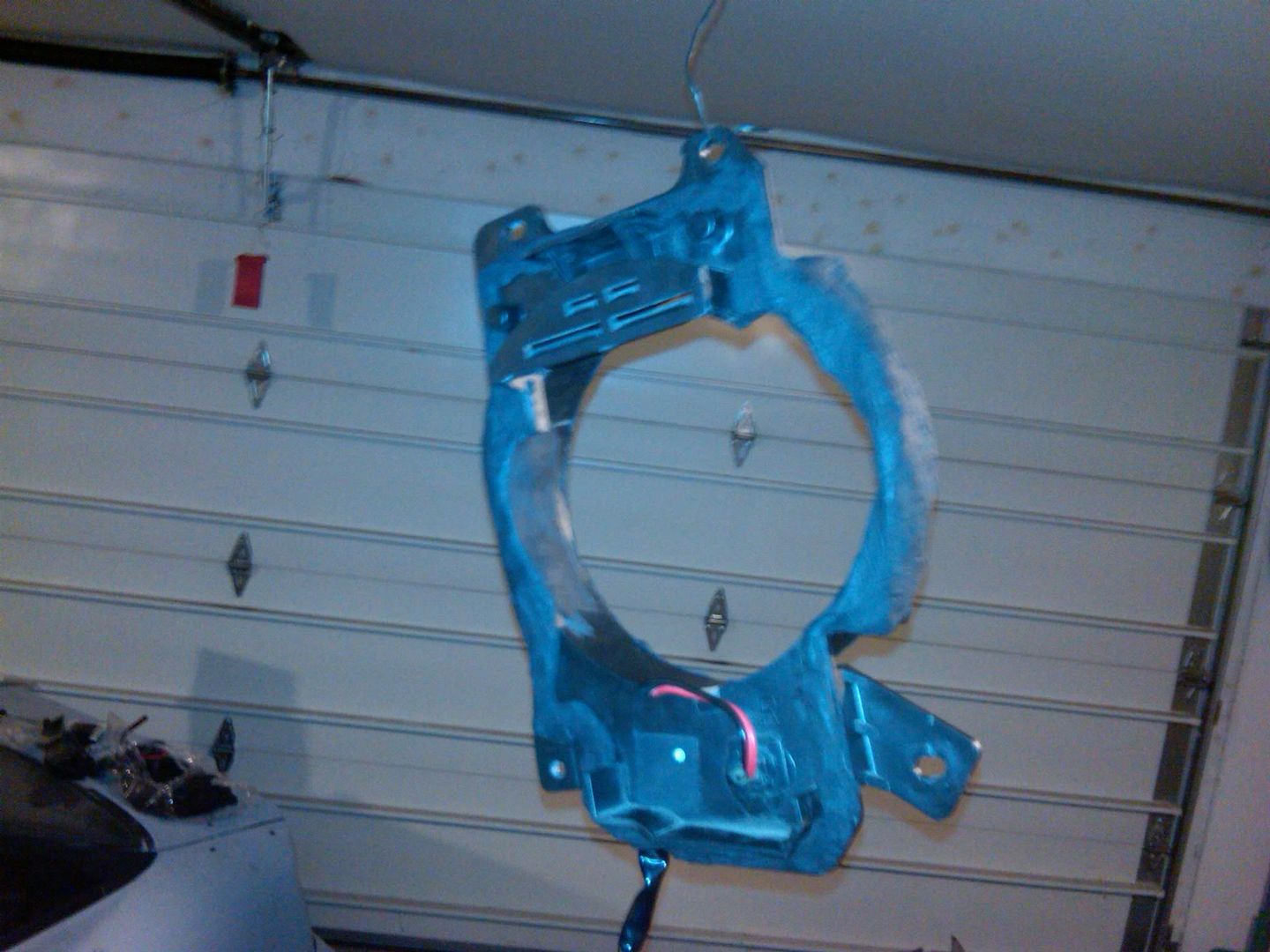
I reinstalled the bracket, put a light inside the door and looked along the outside of the bracket to look where light was coming through. Then I applied clay as needed along the inside of the bracket to make a tight seal.
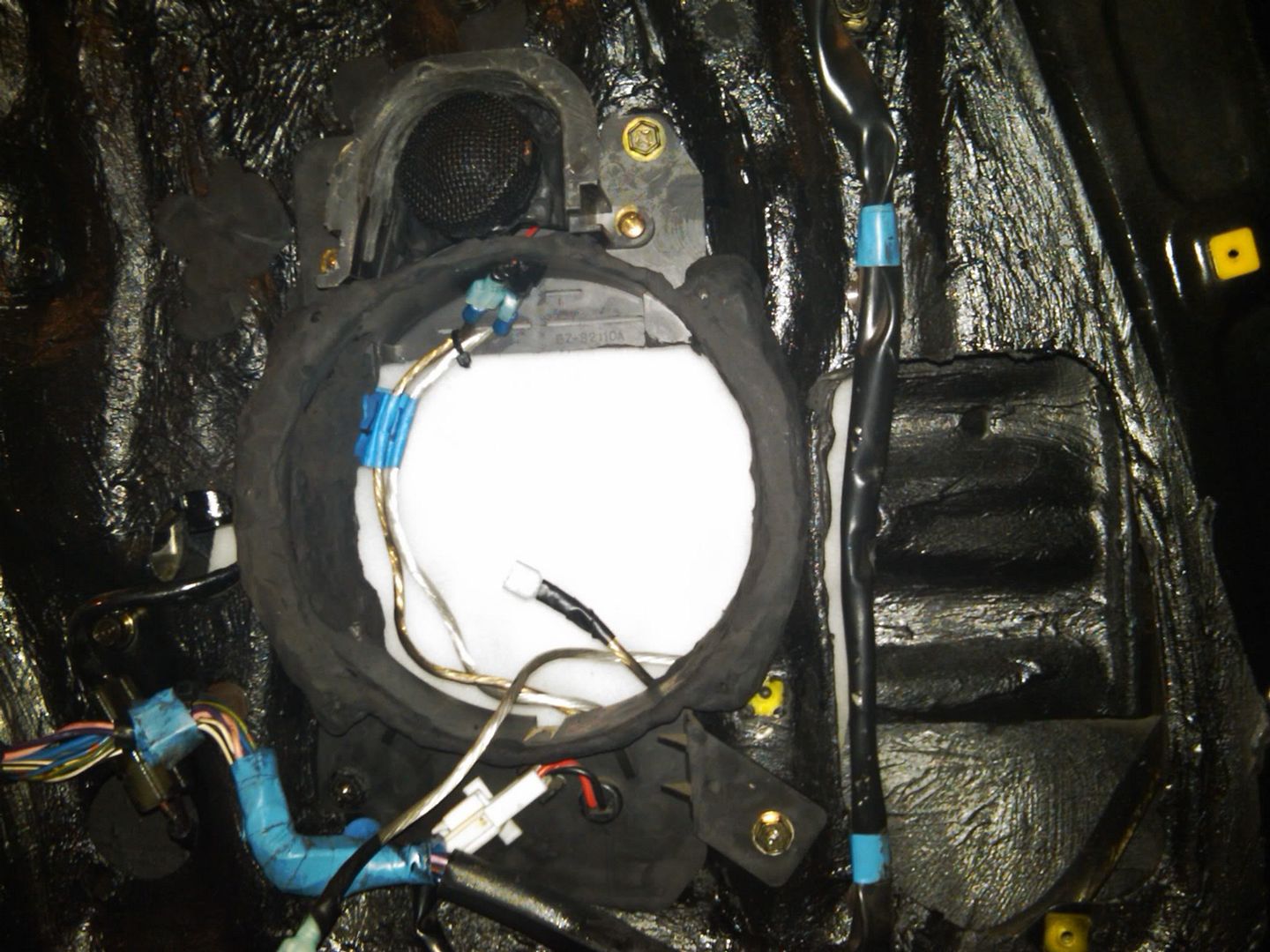
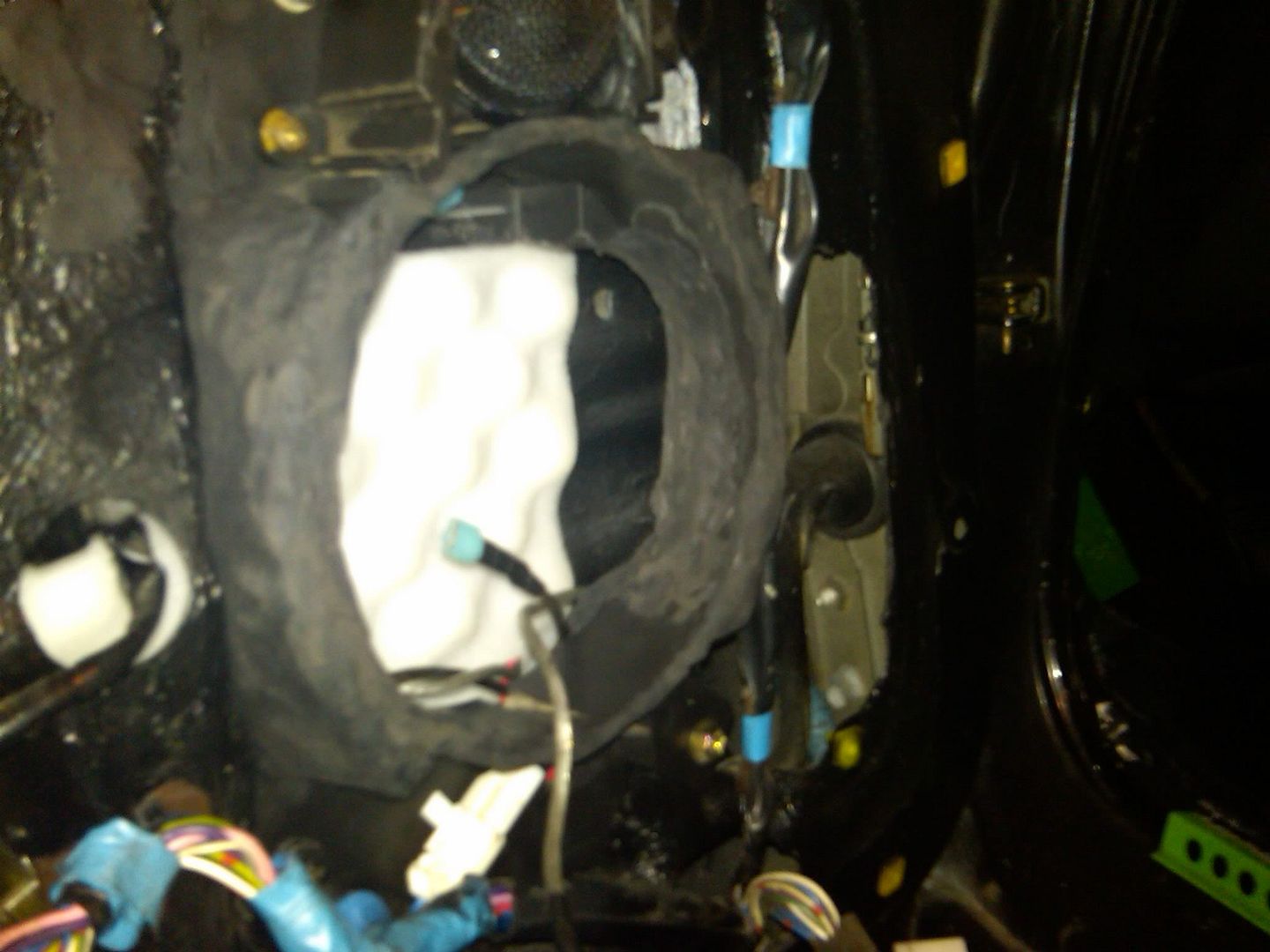
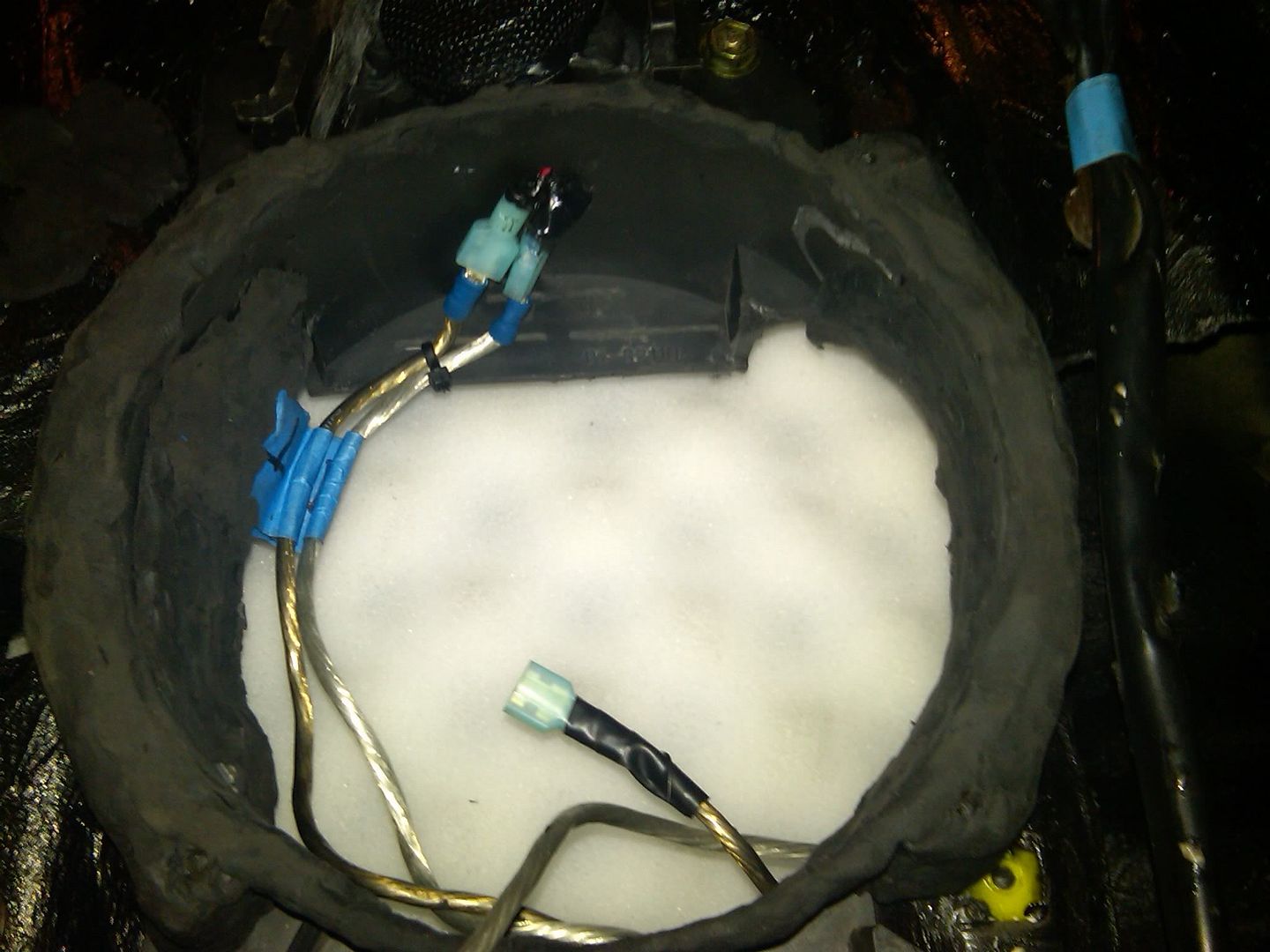

Start with a pair of speaker brackets out of a 91 or 92 Supra. I went this route rather than fabbing my own pair since the factory bracket positions the speaker in the optimum position allowing both the midbass and tweeter's sound to escape through the 91+ speaker panels.
The first thing I noticed is that the midbase basket was hitting the factory bracket on both the left and right sides where it tapers in to fit the door.



I simply cut out the sides and a little of the back-plate to accommodate the midbase.

Then I noticed that the midbase clears the bracket, but now hits the door.


I went ahead and marked the door along the speaker ring and cut out all metal needed to make a nice fit.


Only the right side (on passenger door, left on driver side) needs cutting for the midbase to clear, but I went a head and shaved a little of the opposite side as well to help clear the speaker terminals. I applied a healthy dose of liquid sound deadener to the back of the doors around where the bracket mounts. I went especially heavy on the part of the door where it was cut since it became quite flimsy. I applied around 3/4" to that part.
Afterwards, I sanded the inside of the tweeter housing to allow for fitment of the 1" tweeter.

I used painters tape placed directly on the door around where the bracket mounts. Then mounted the bracket on the door and taped along the insideof the left and and right of the bracket. Then I sprayed some expanding window sealing foam along the outsides of the bracket.
After leaving the foam overnight. I removed the bracket from the door.


I trimmed the foam with an Exacto Knift


I then coated the outside of the foam with nonhardening modeling clay. I also used the around all edges for a tight seal both on the speaker ring and the back side of the bracket.



I reinstalled the bracket, put a light inside the door and looked along the outside of the bracket to look where light was coming through. Then I applied clay as needed along the inside of the bracket to make a tight seal.



Last edited:

